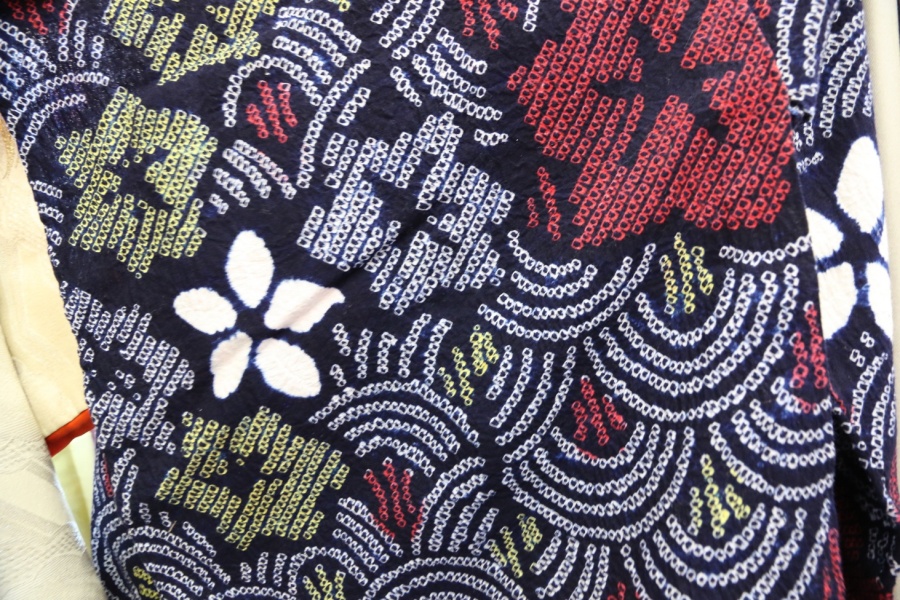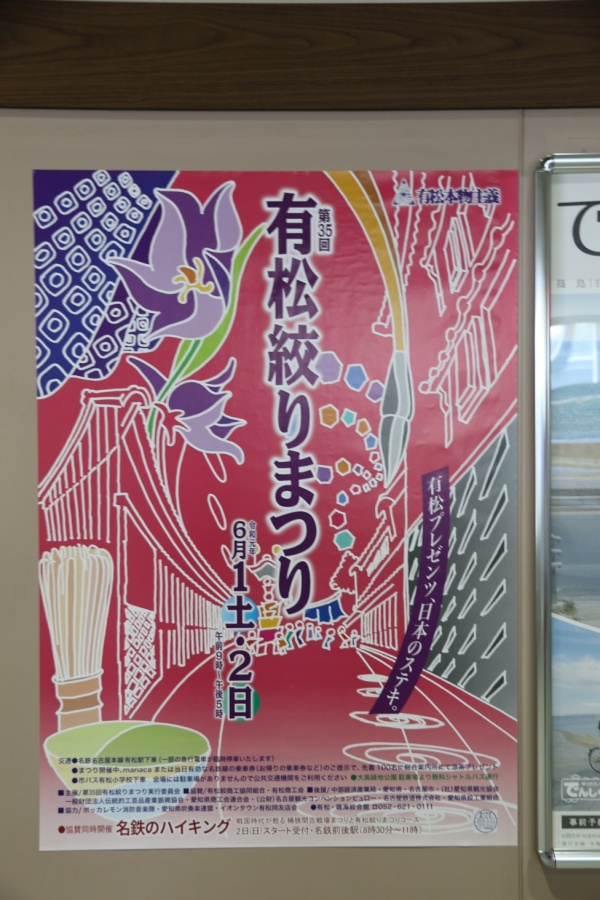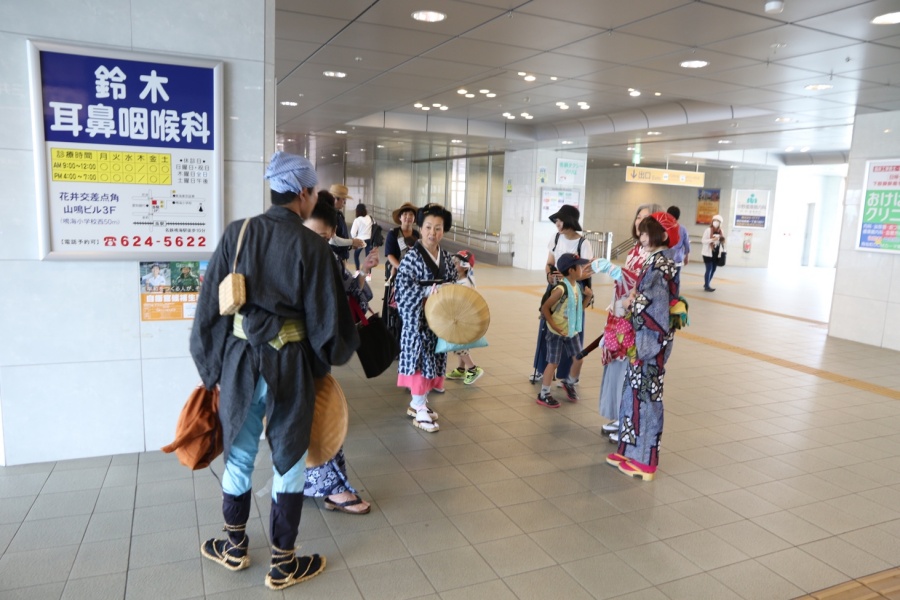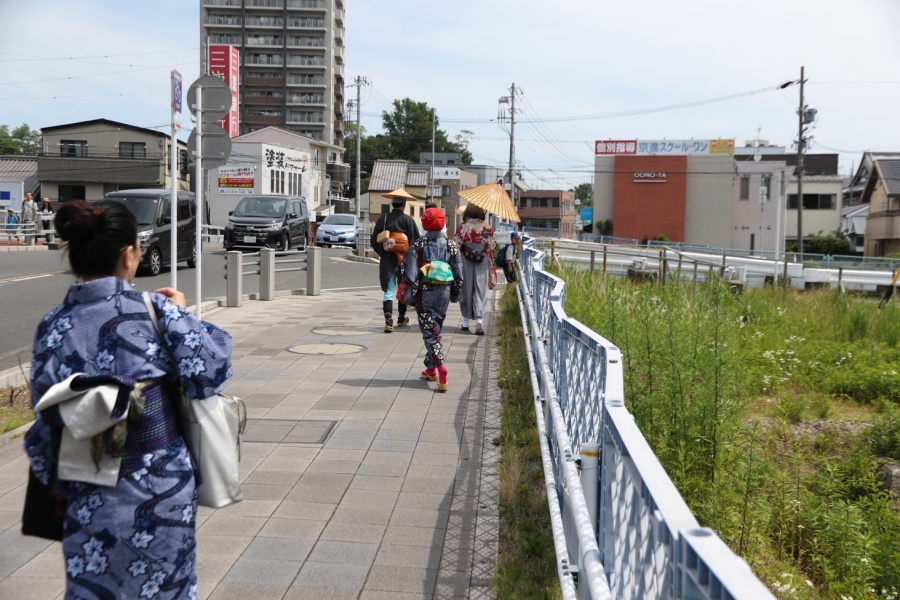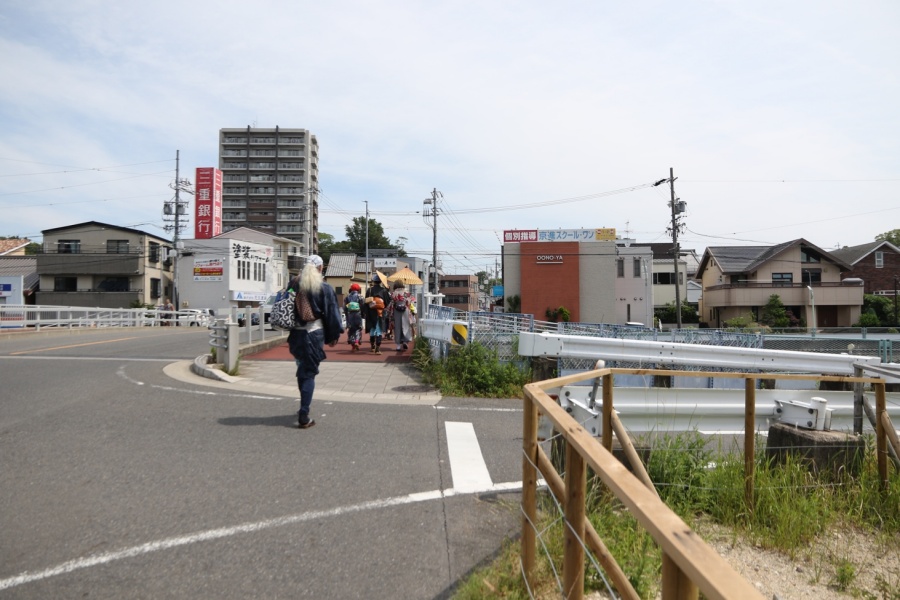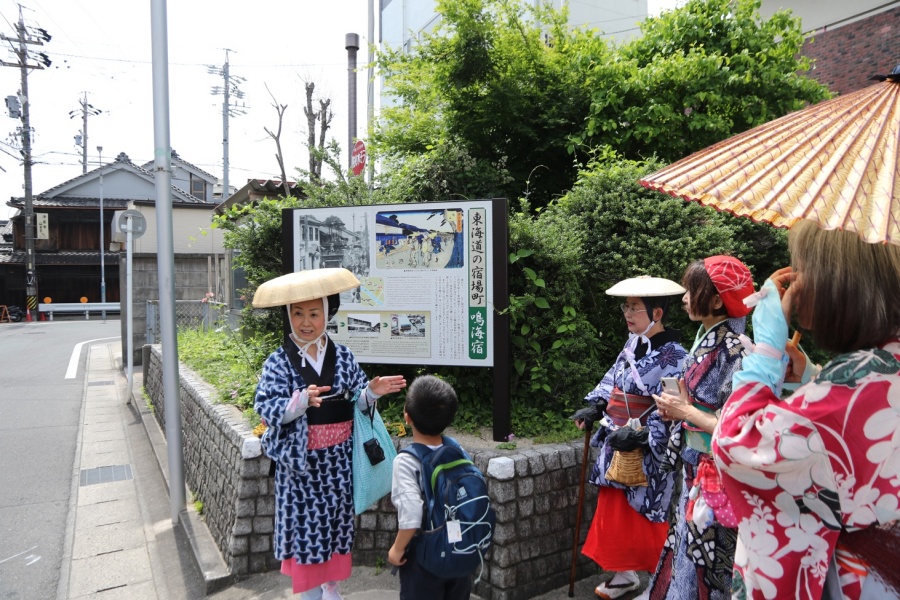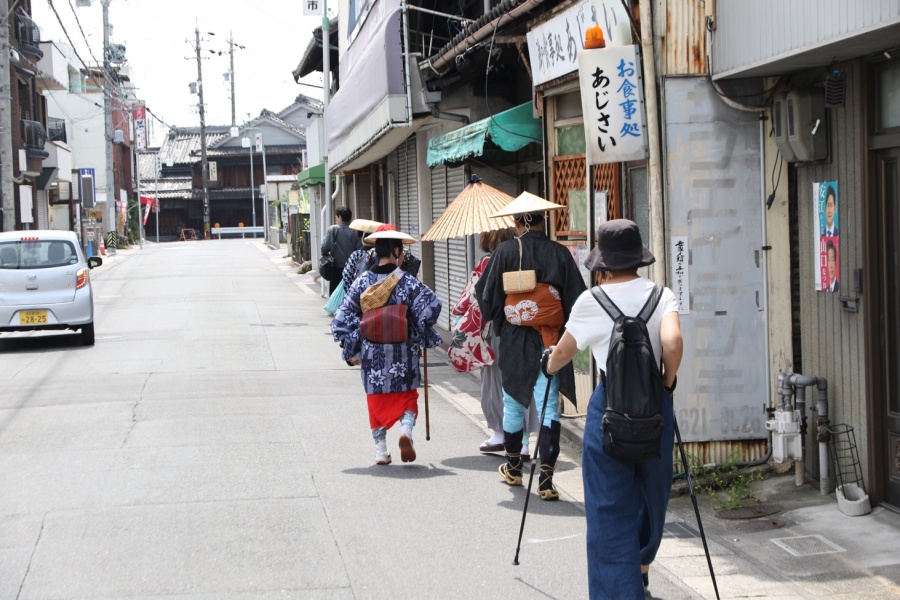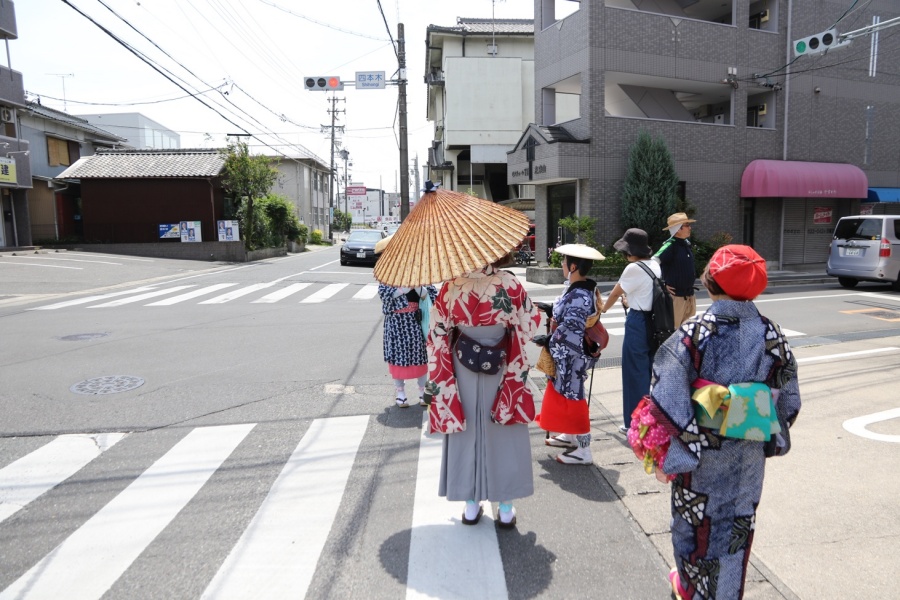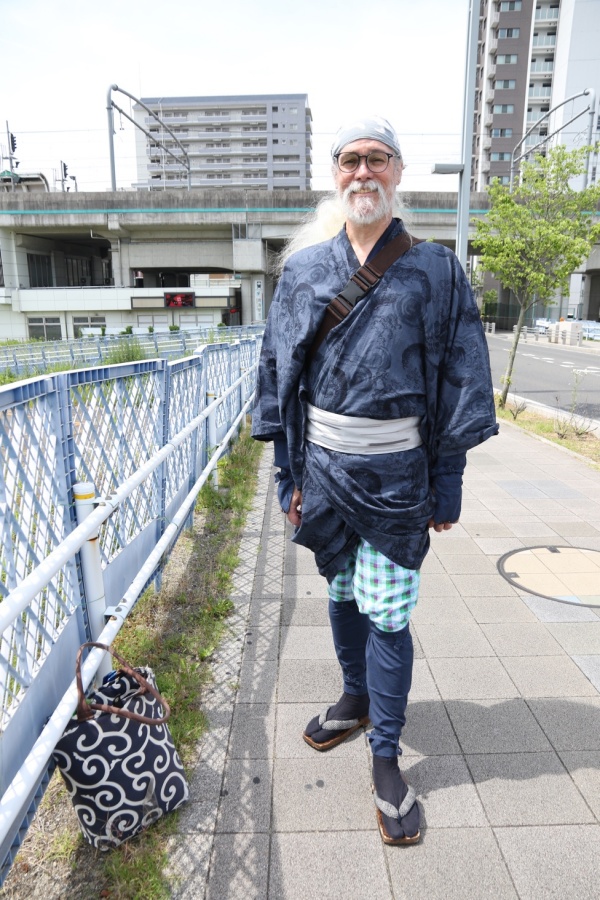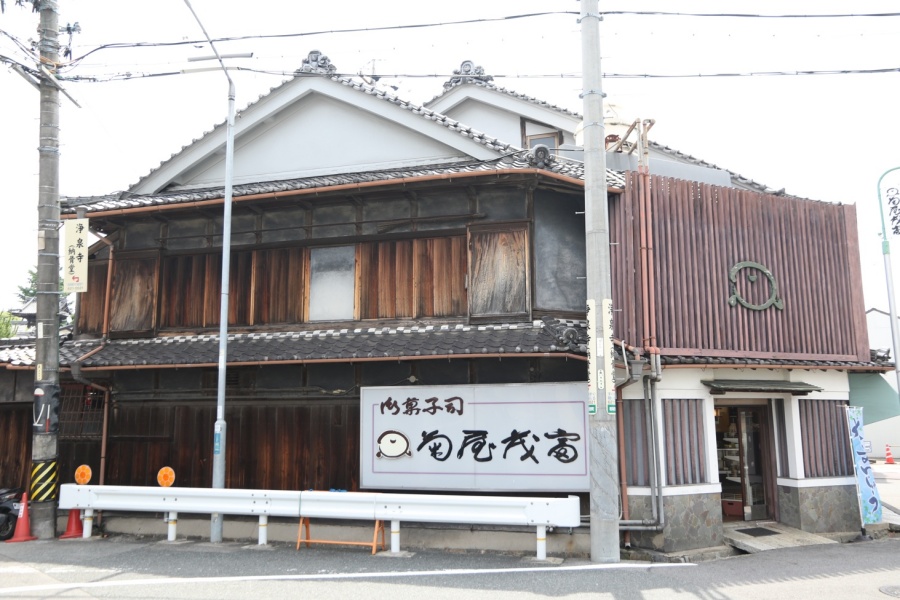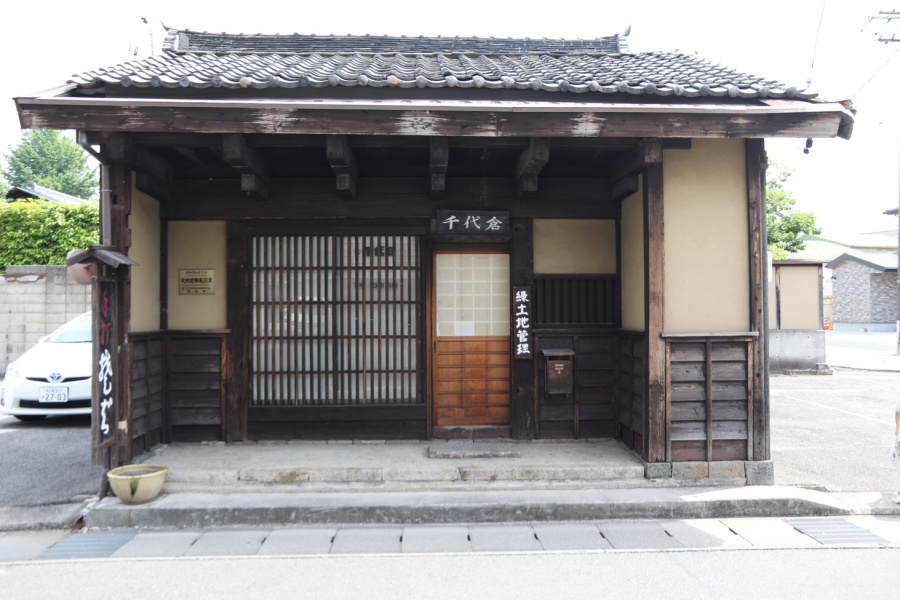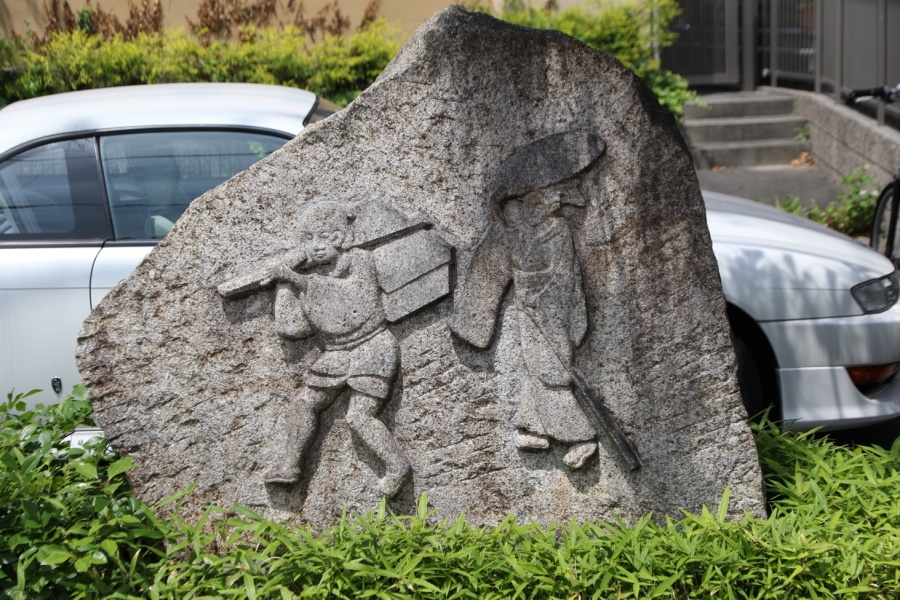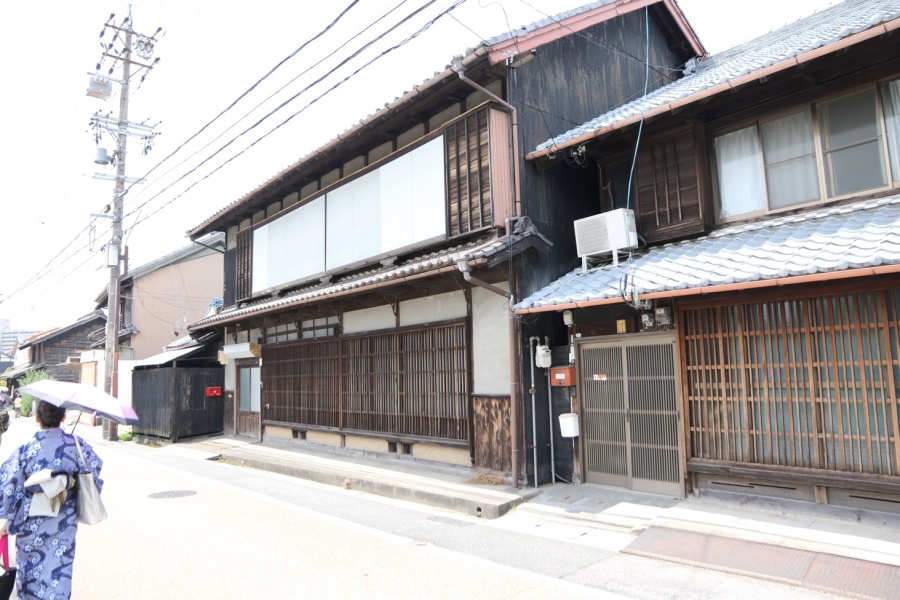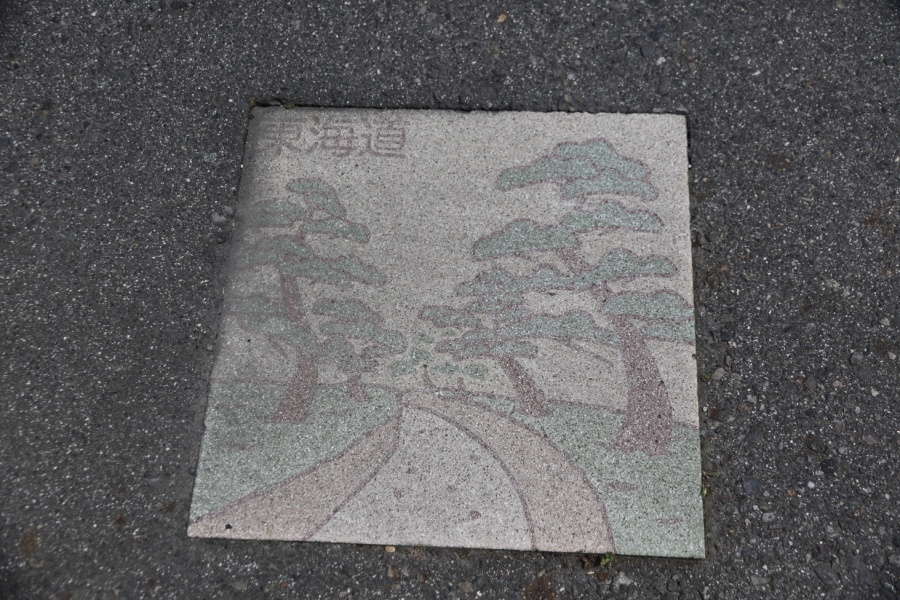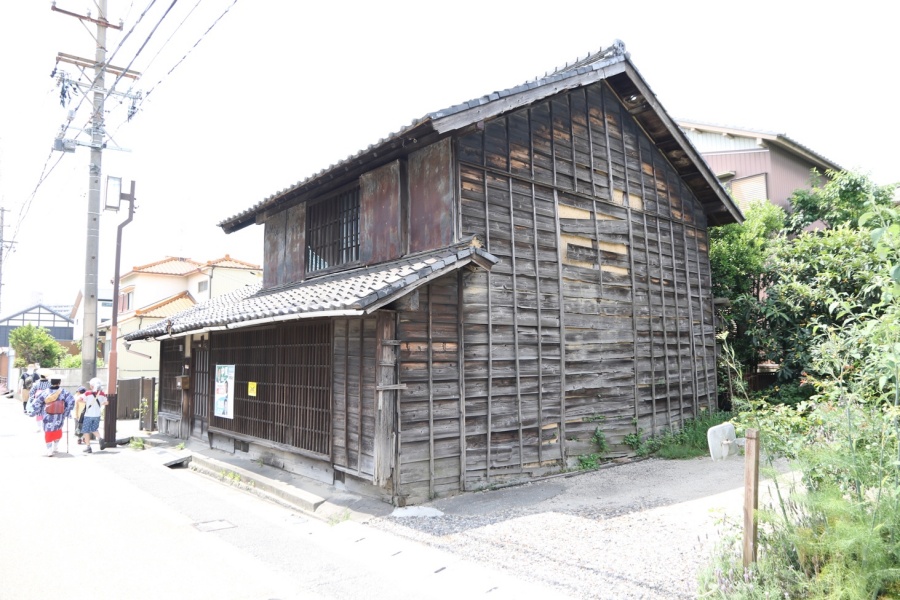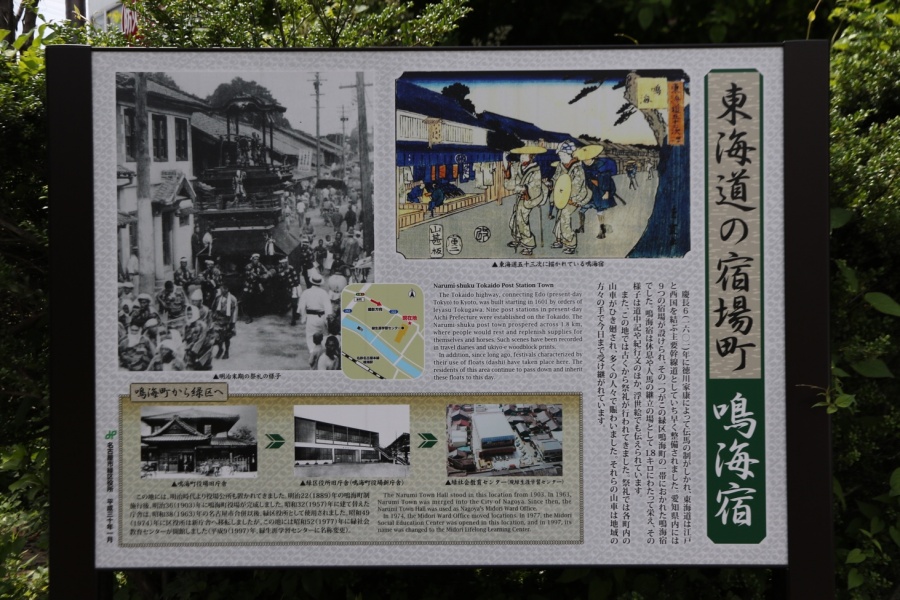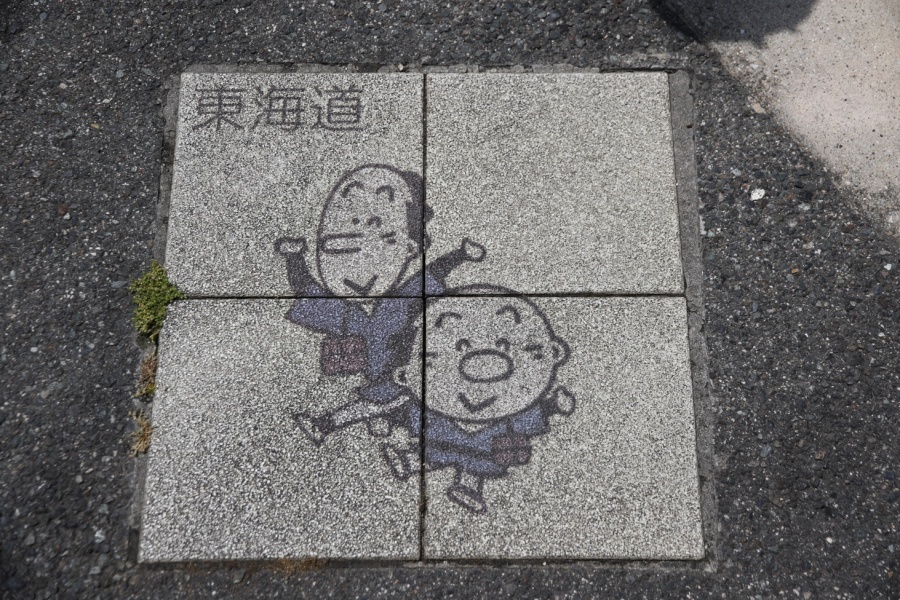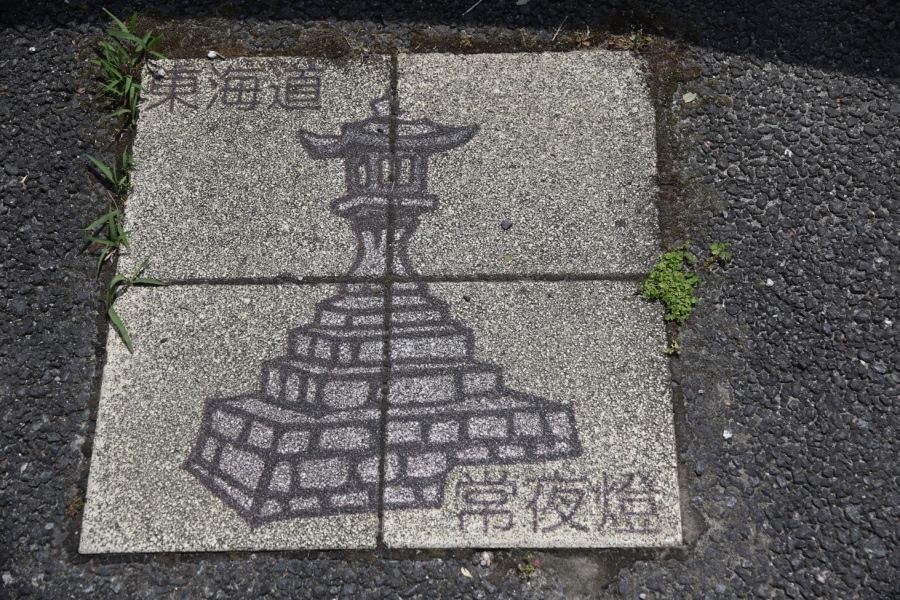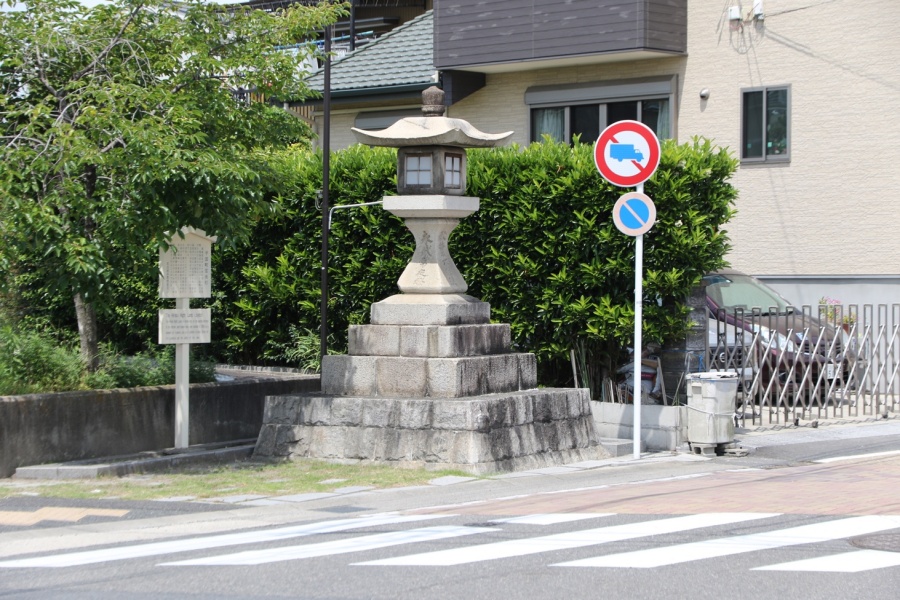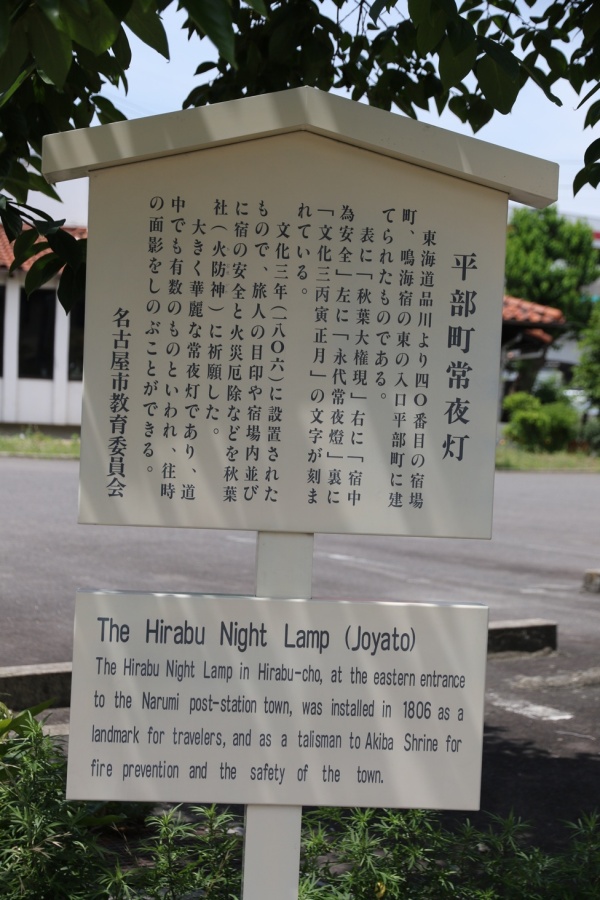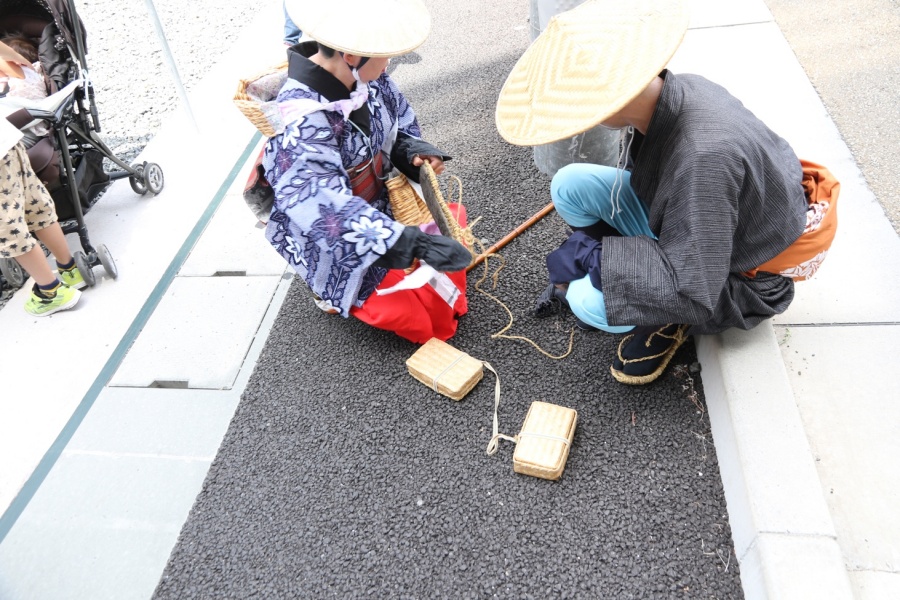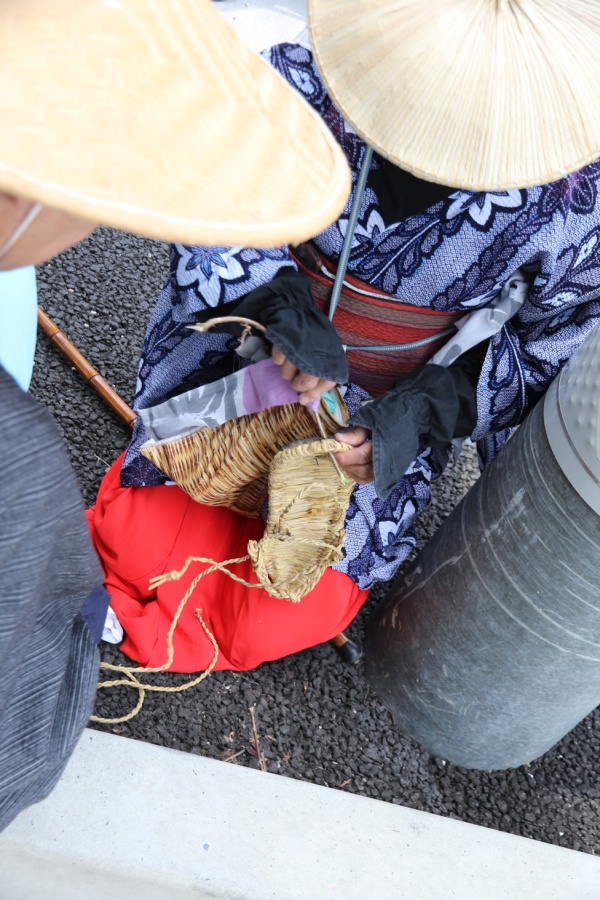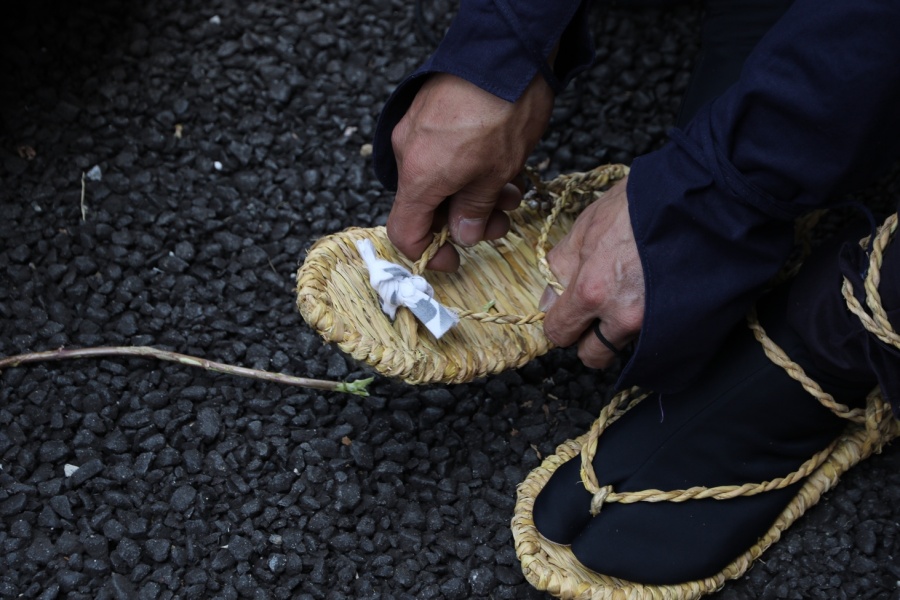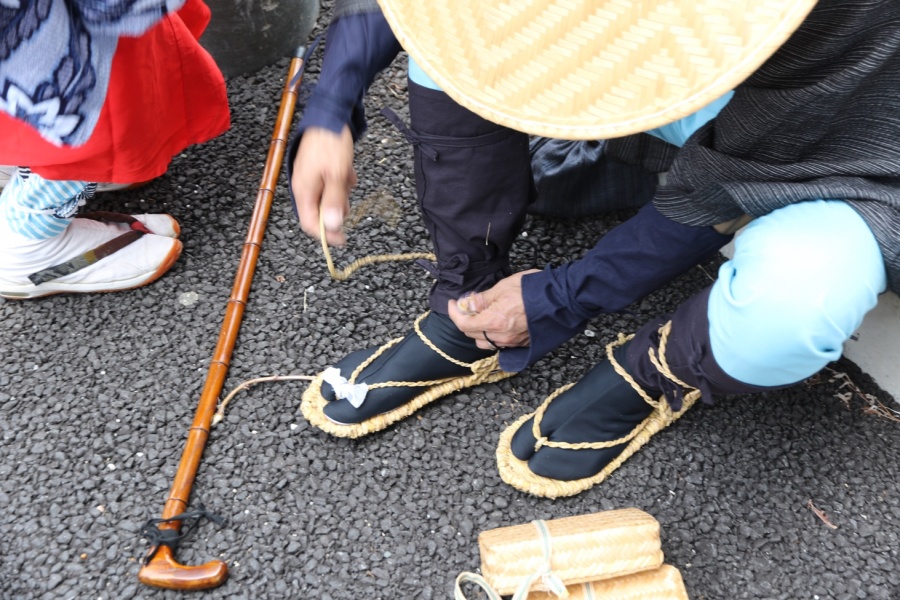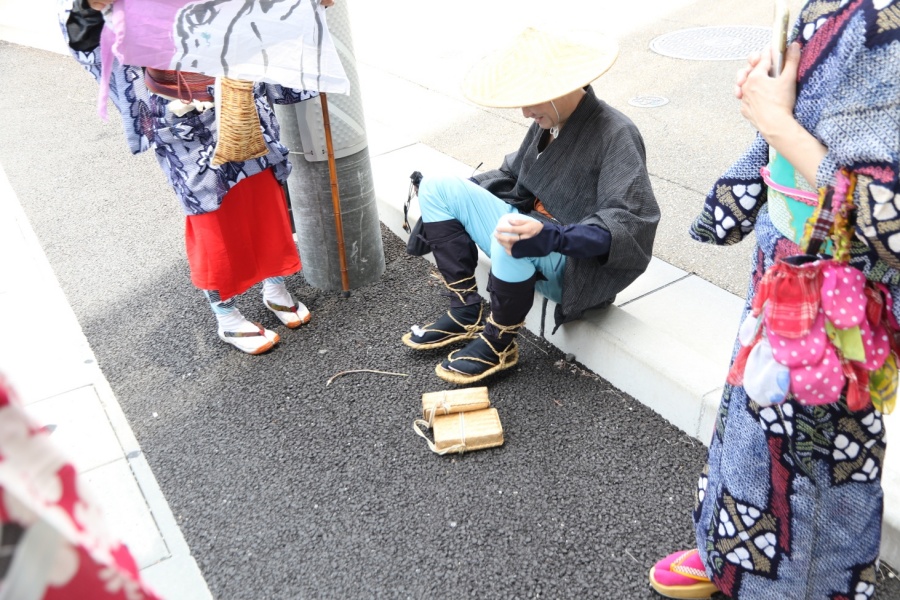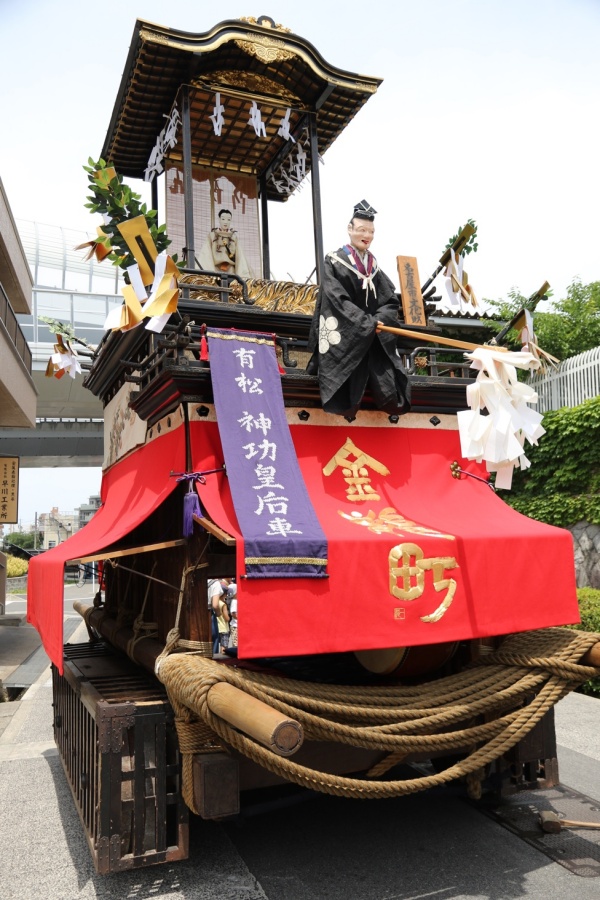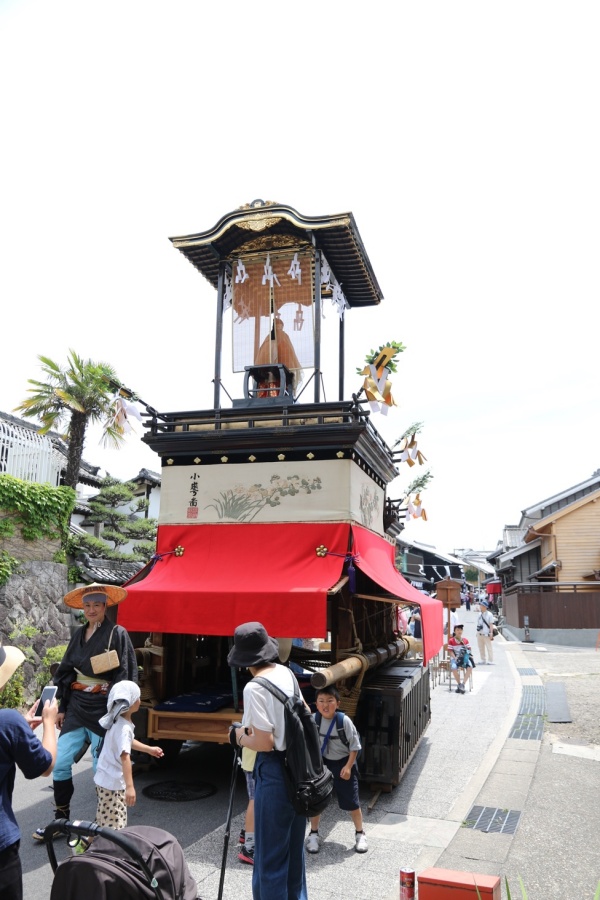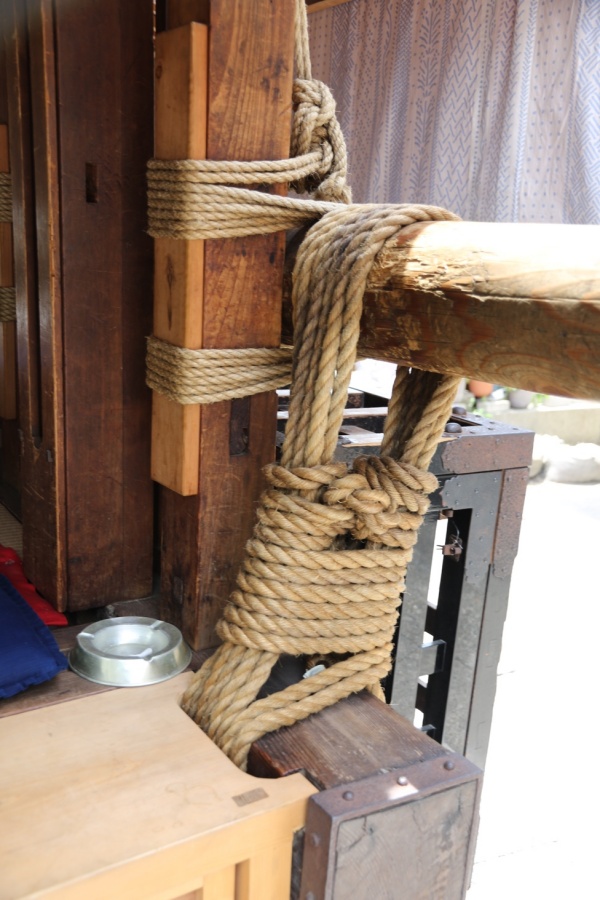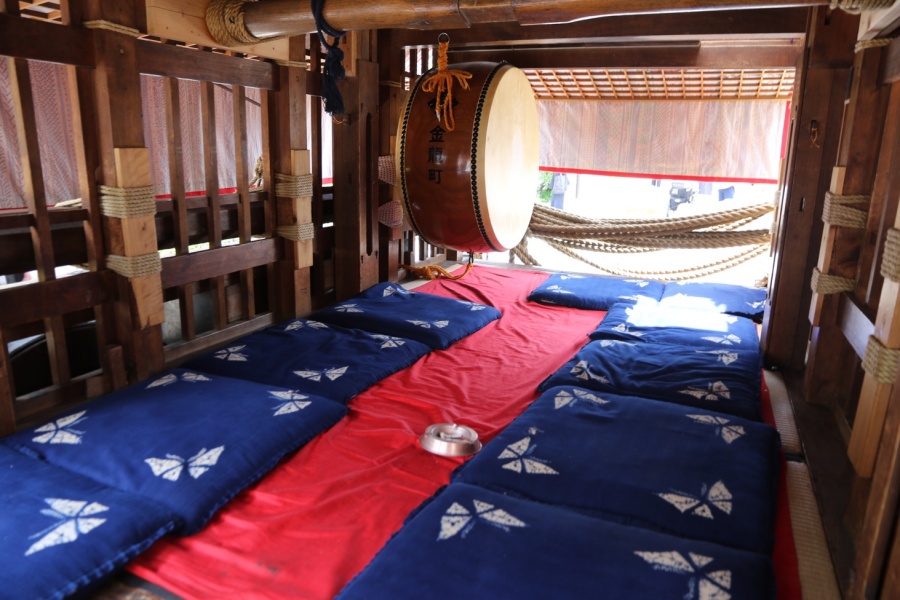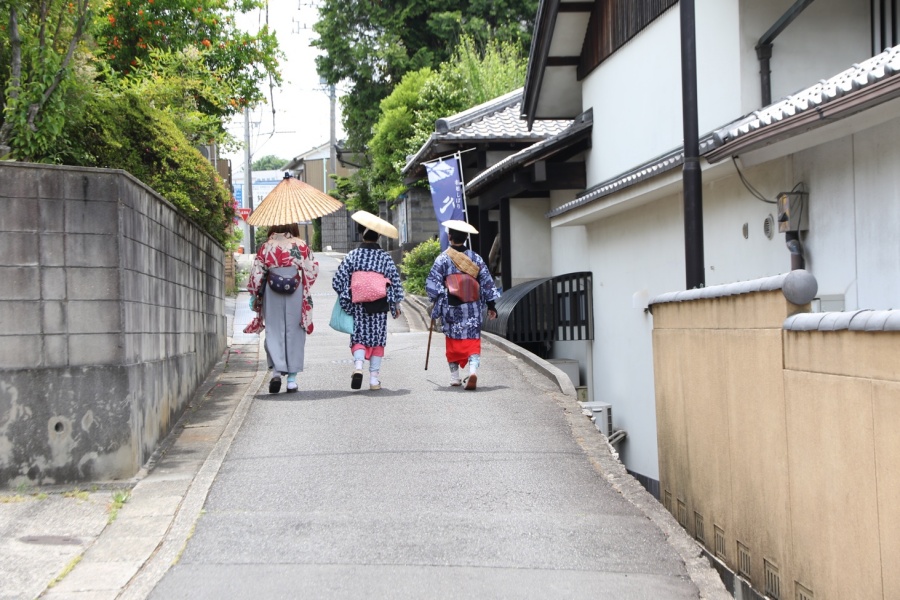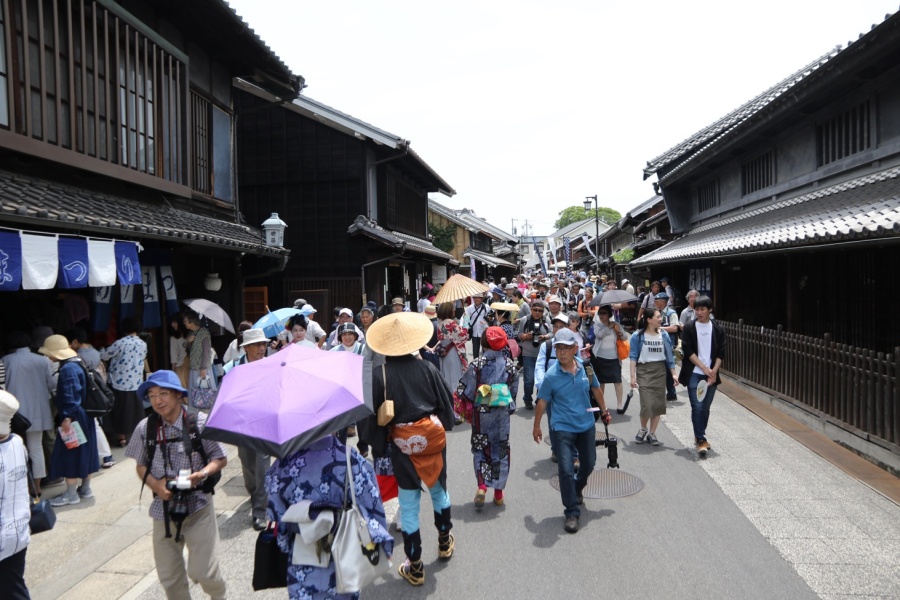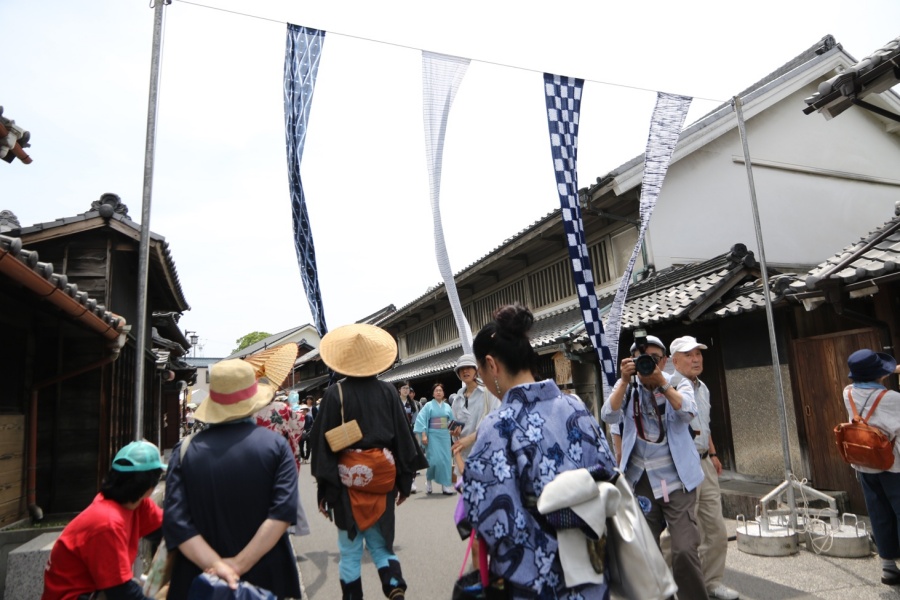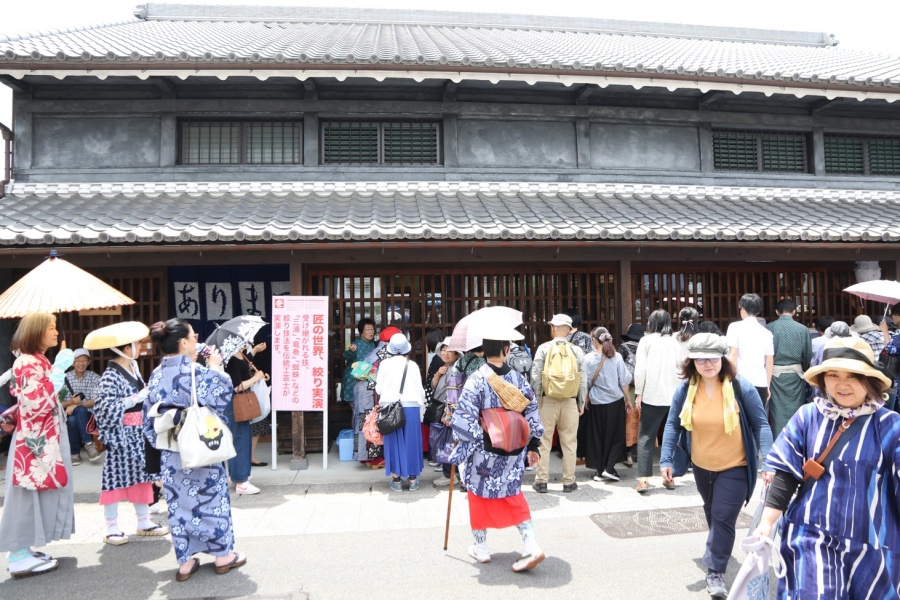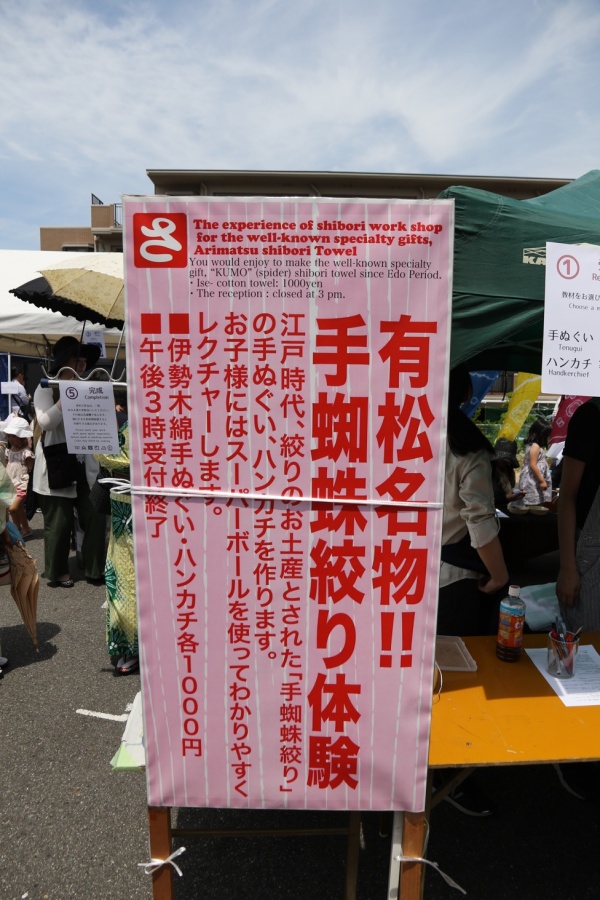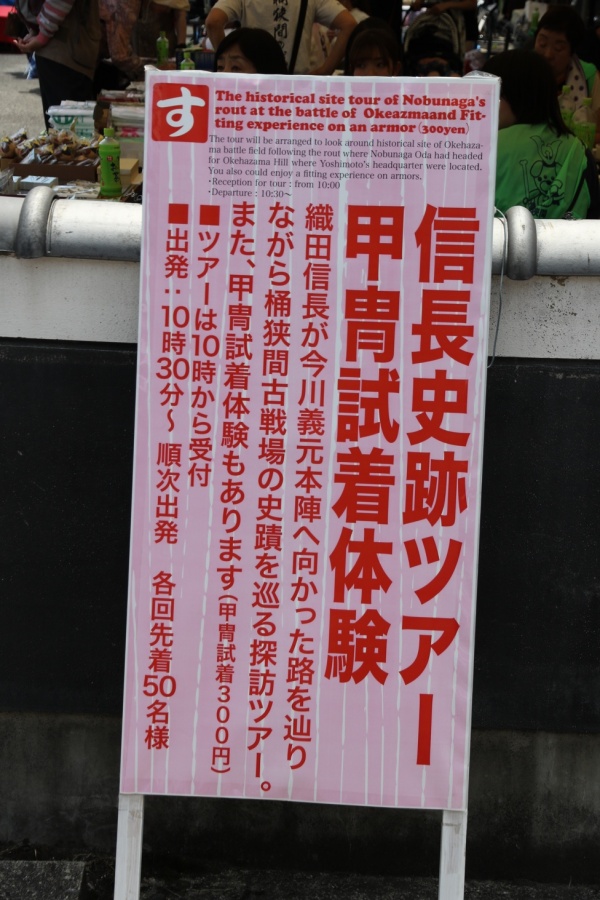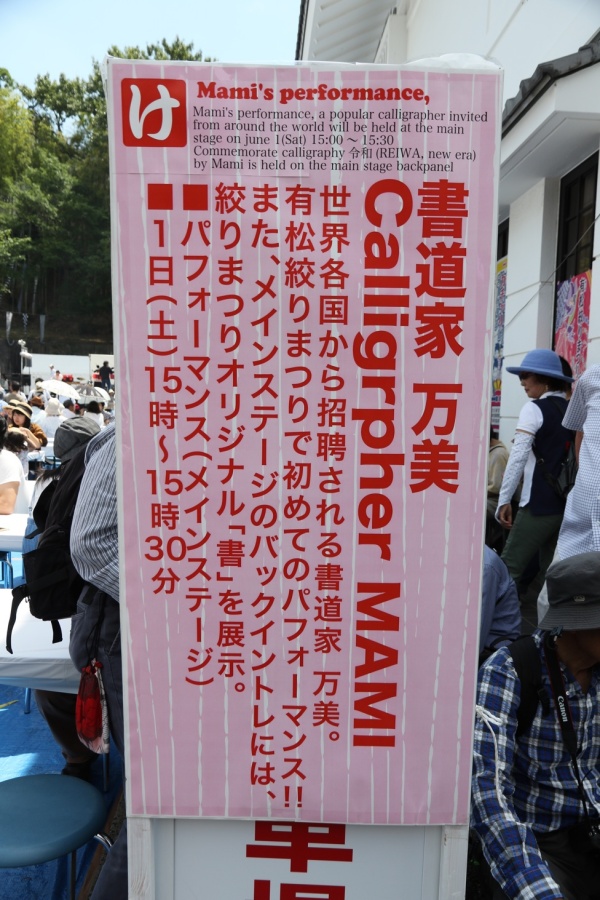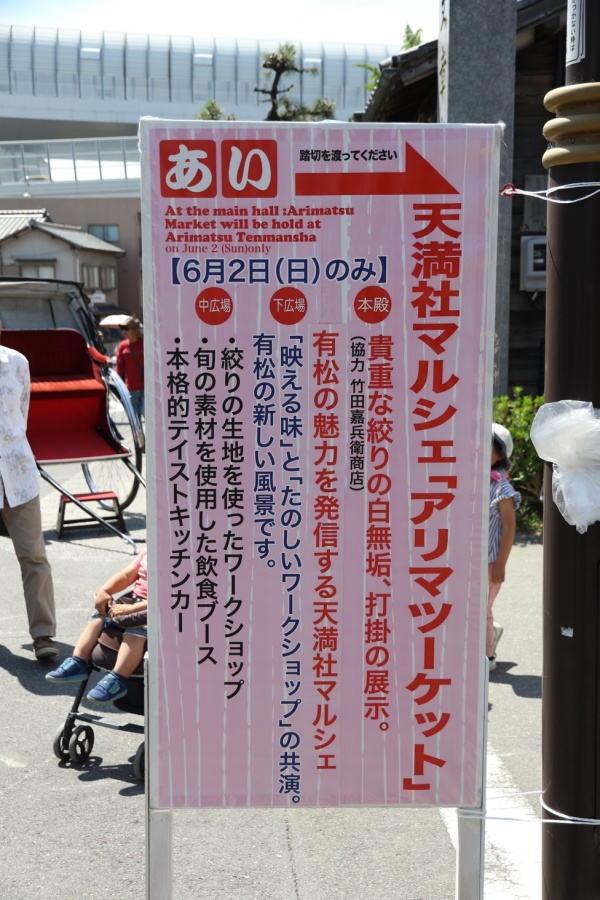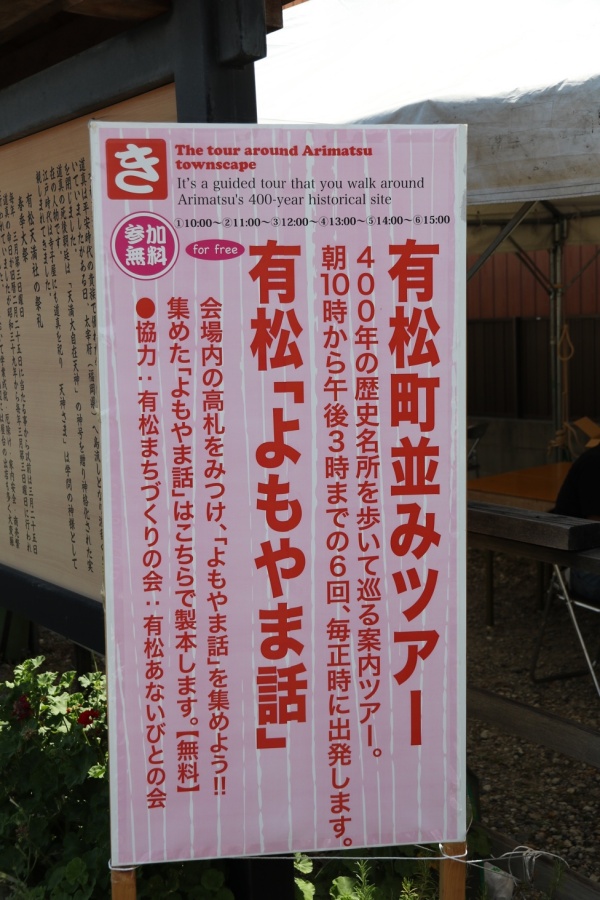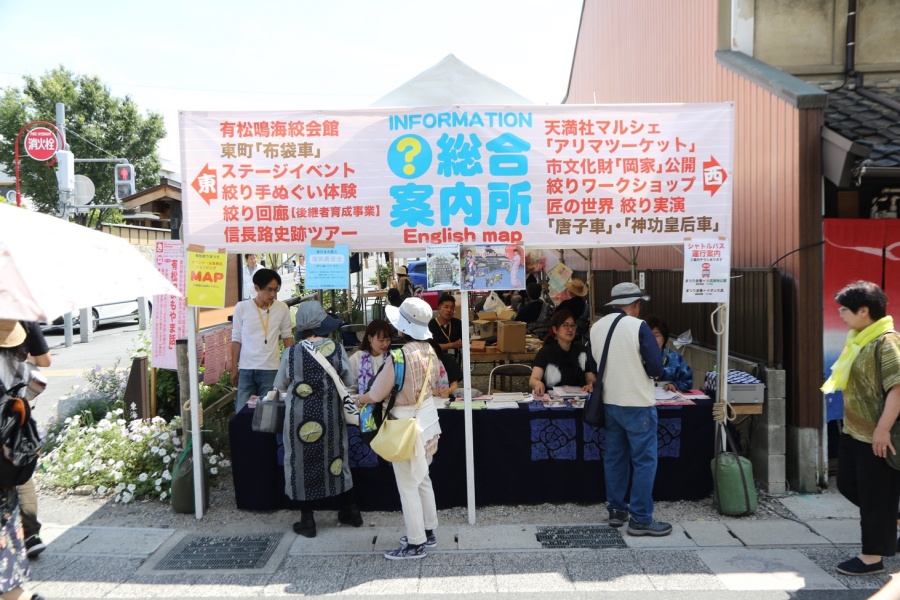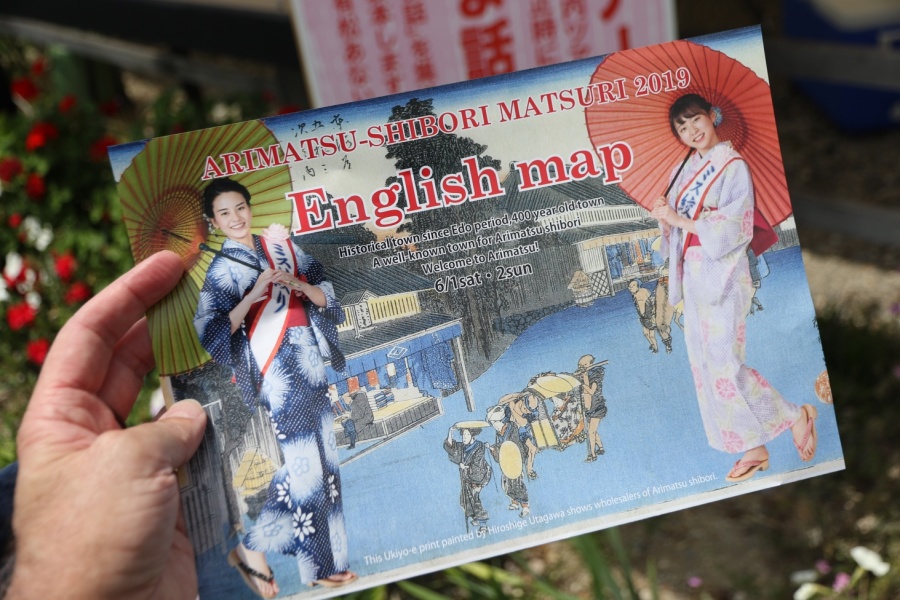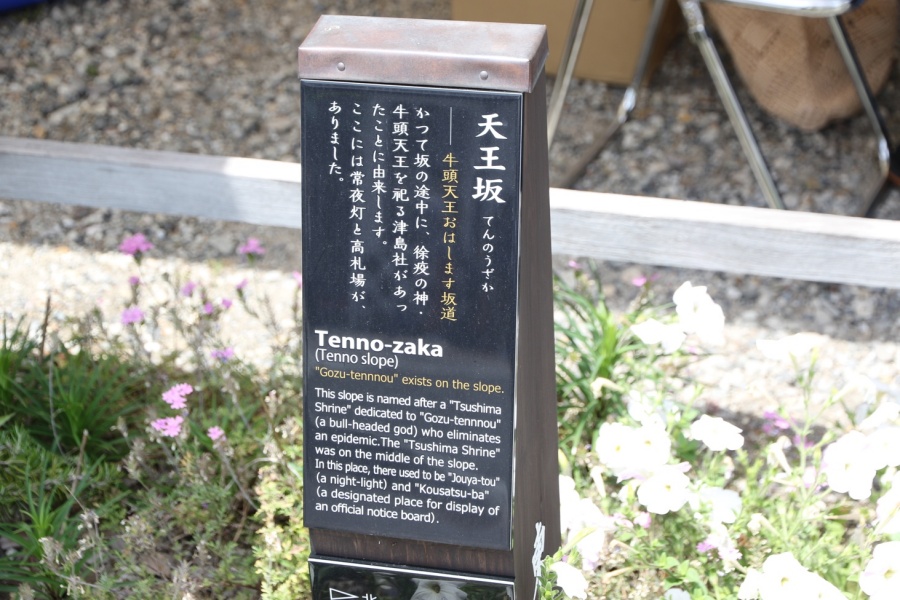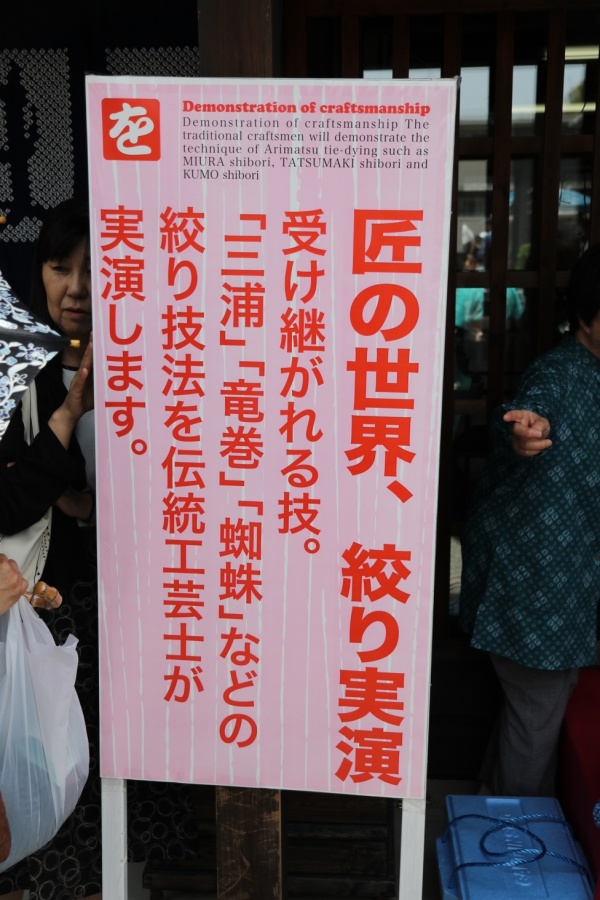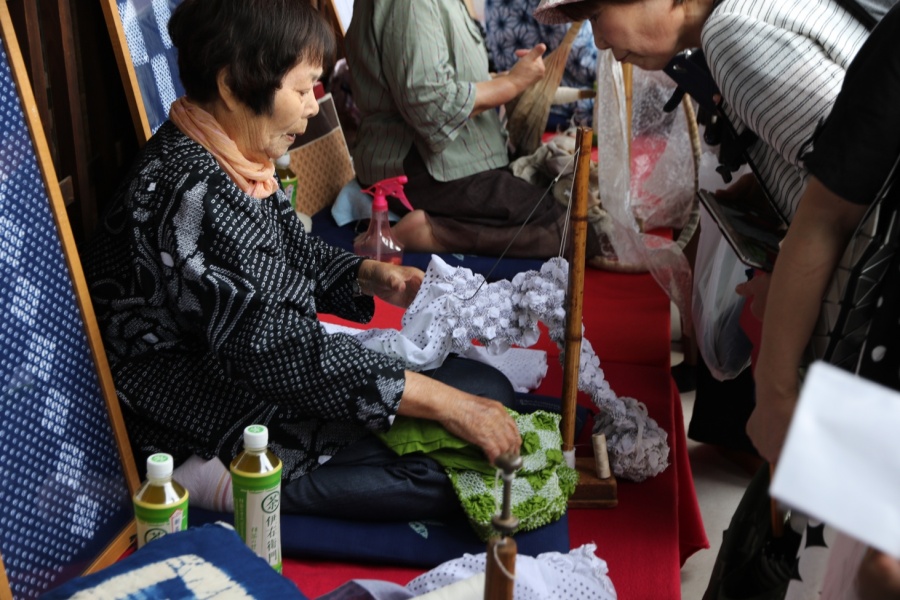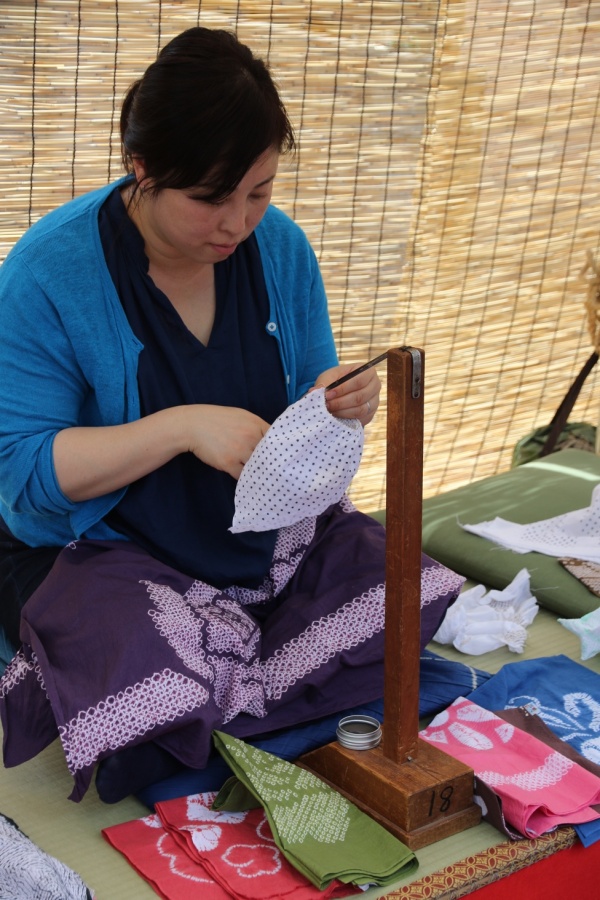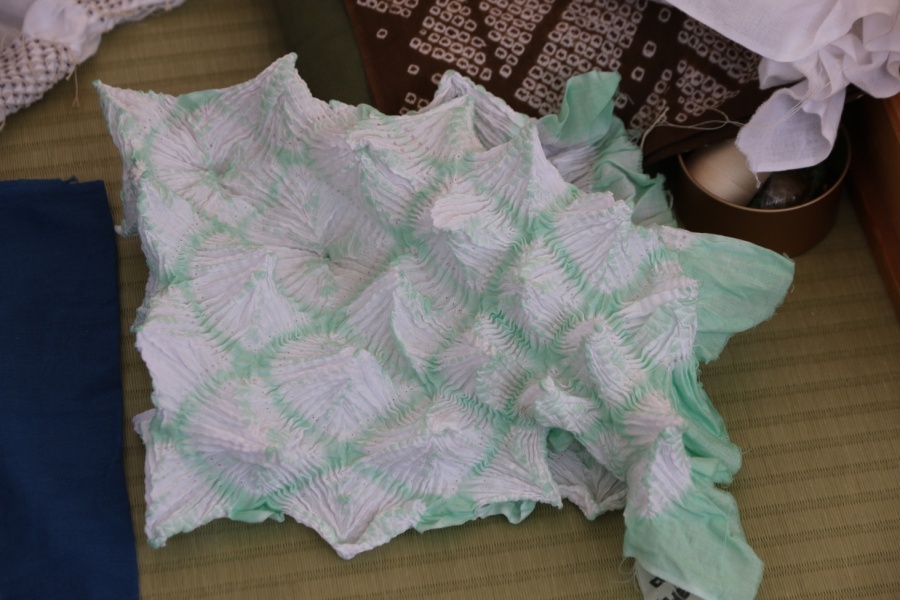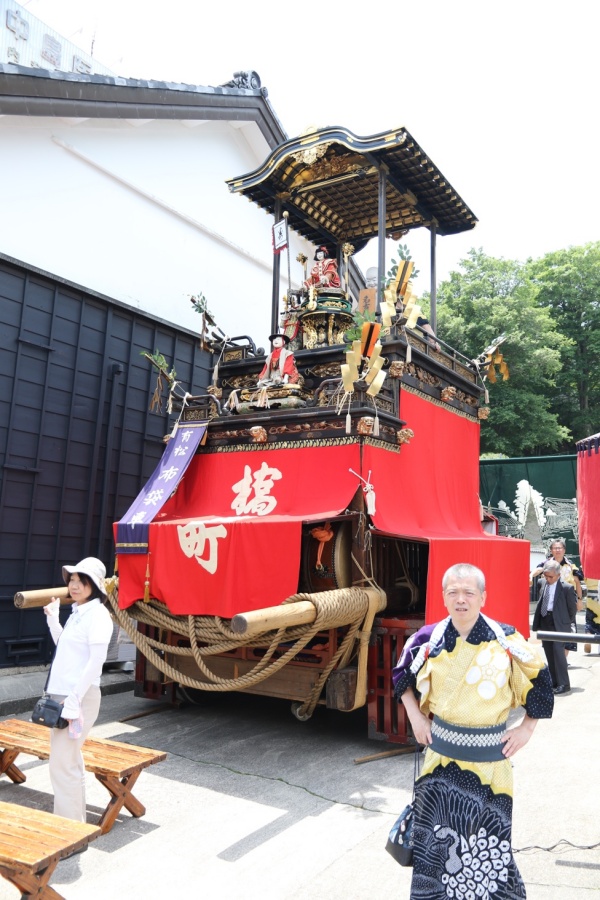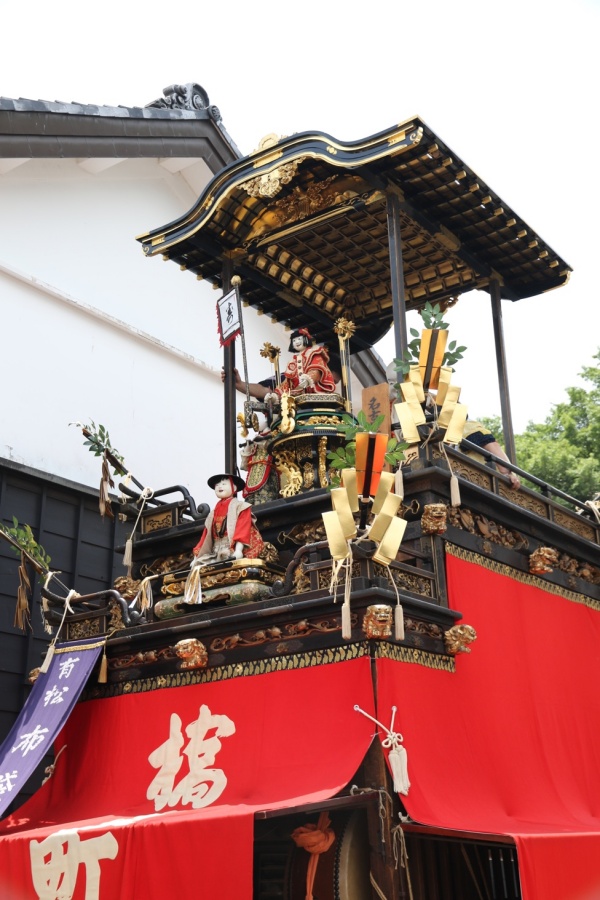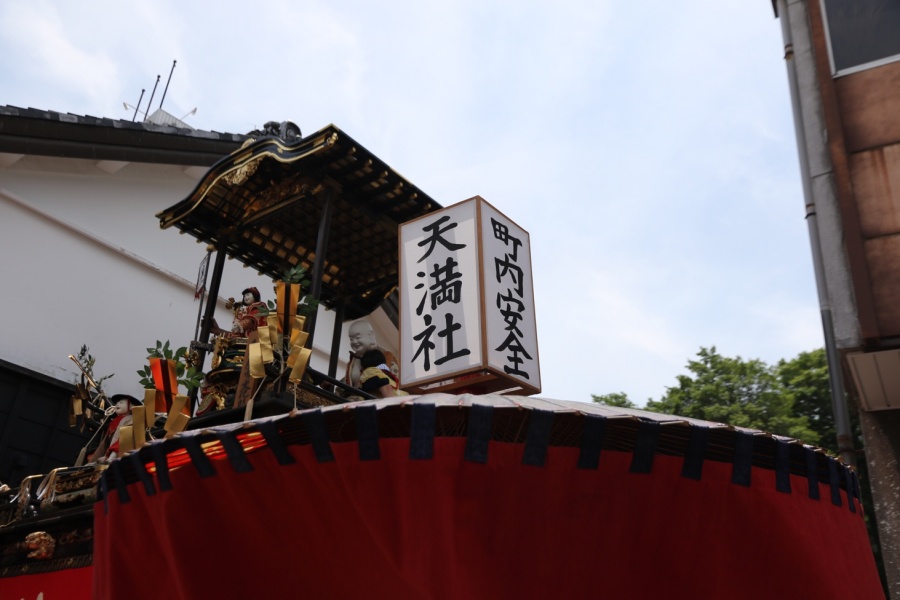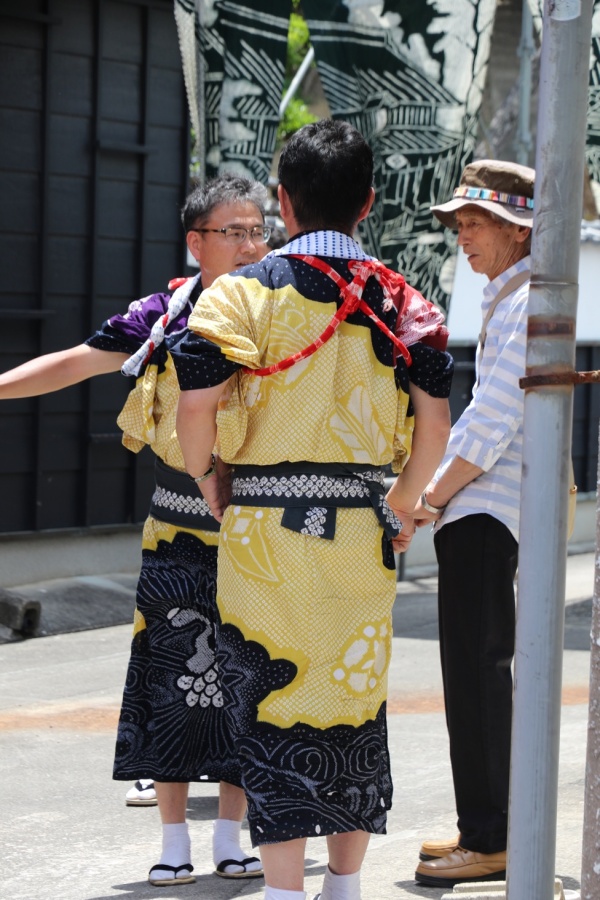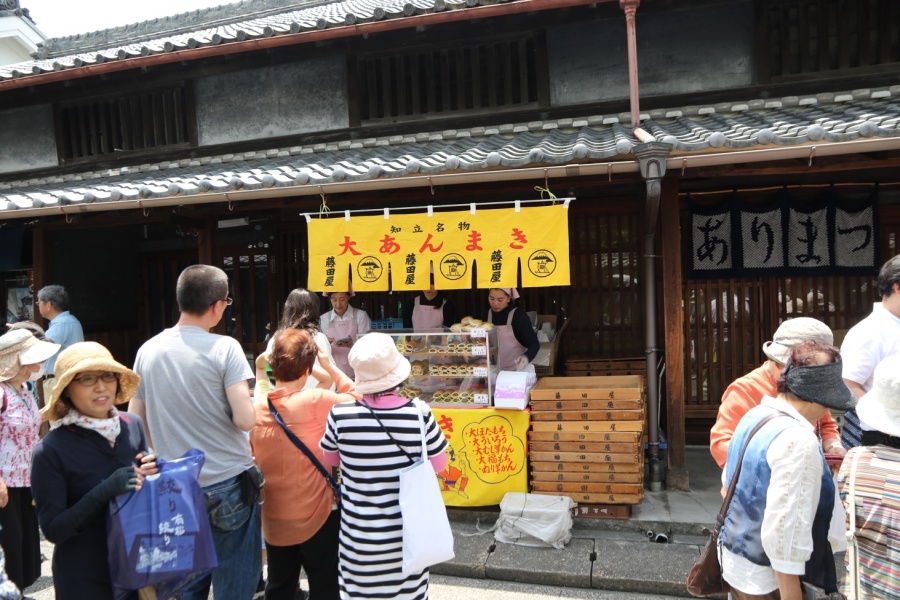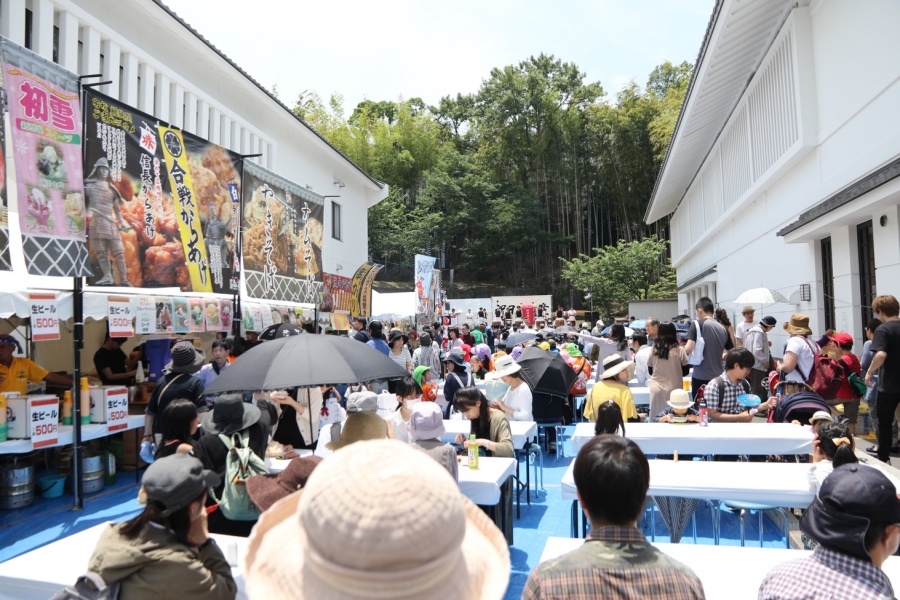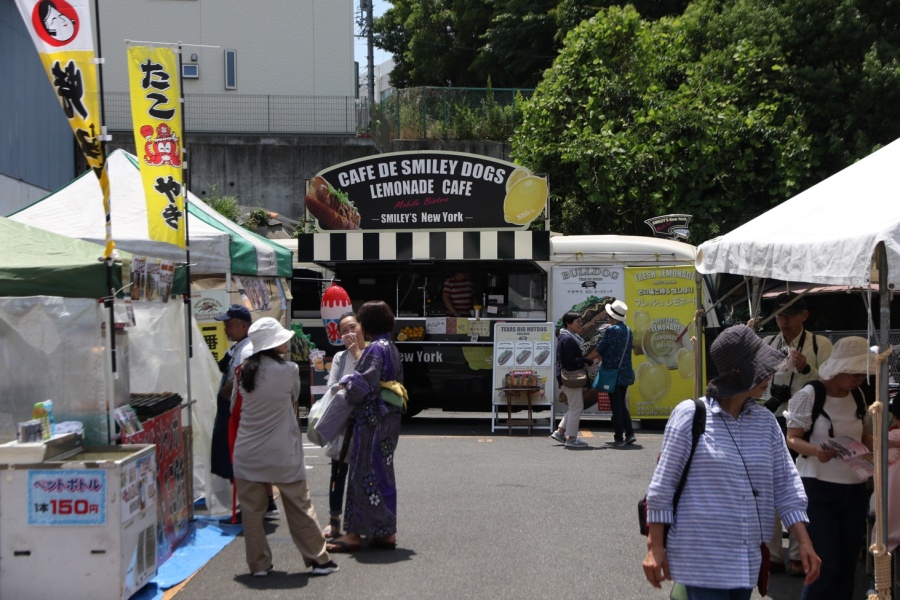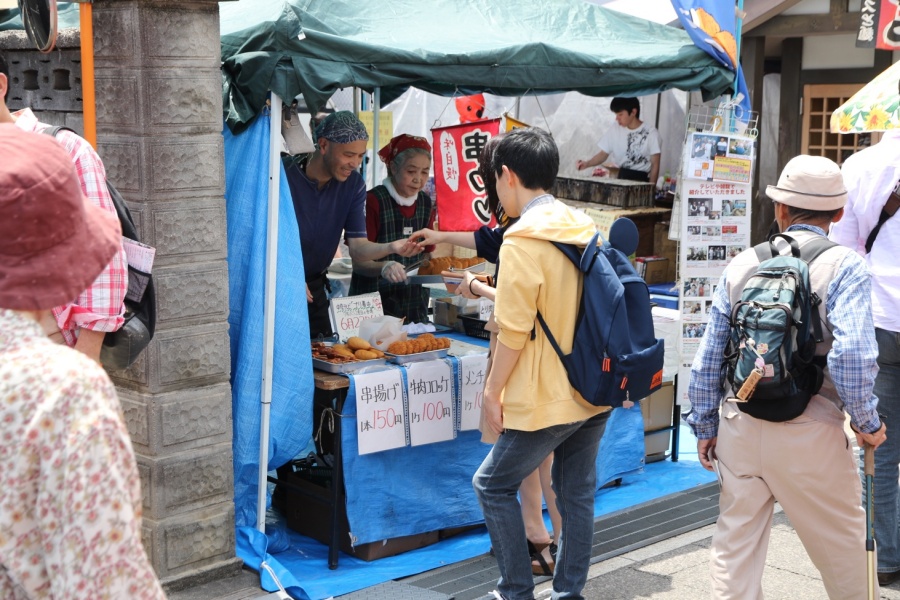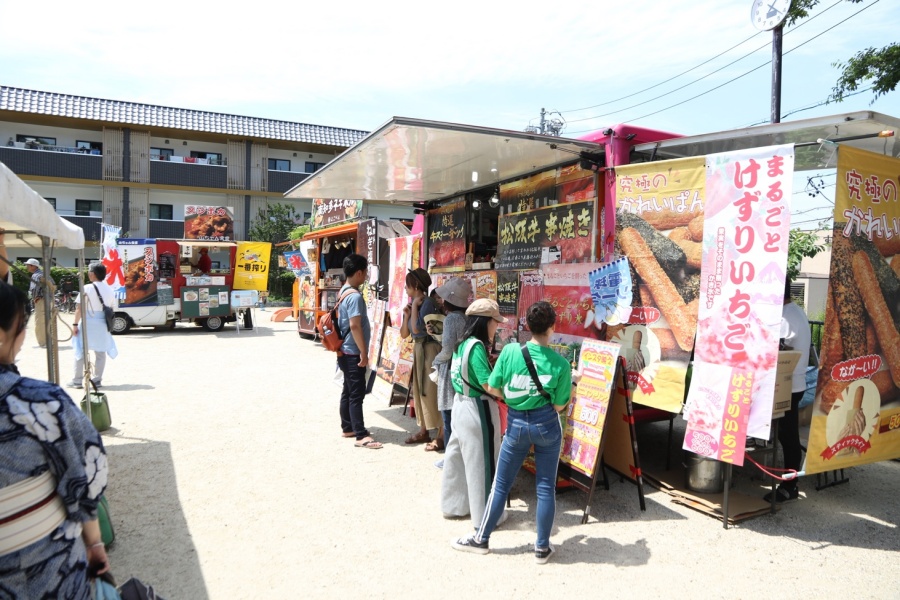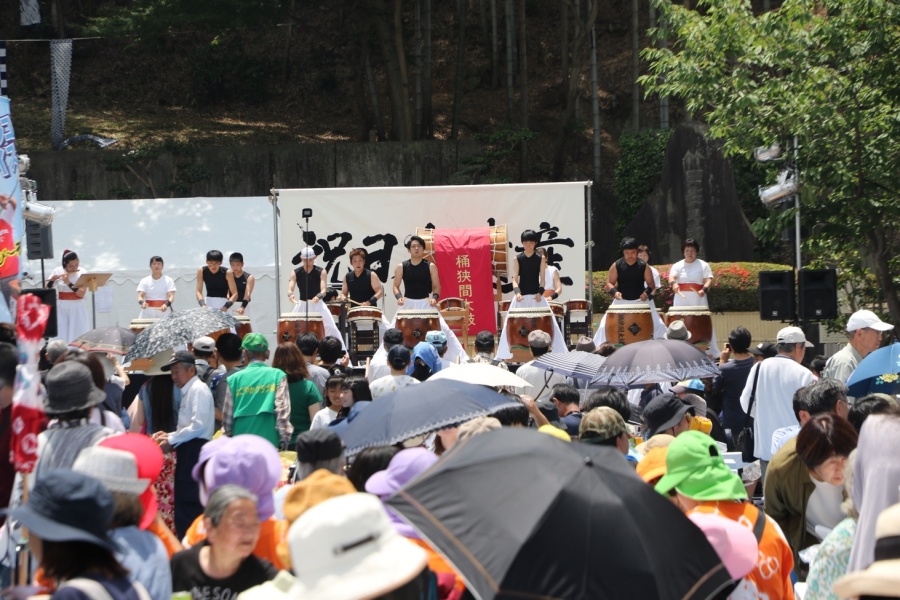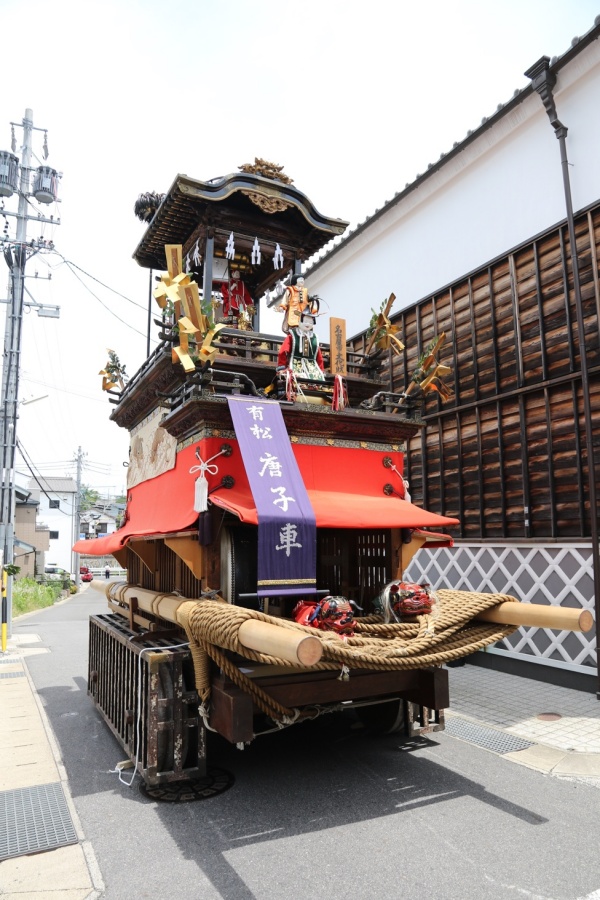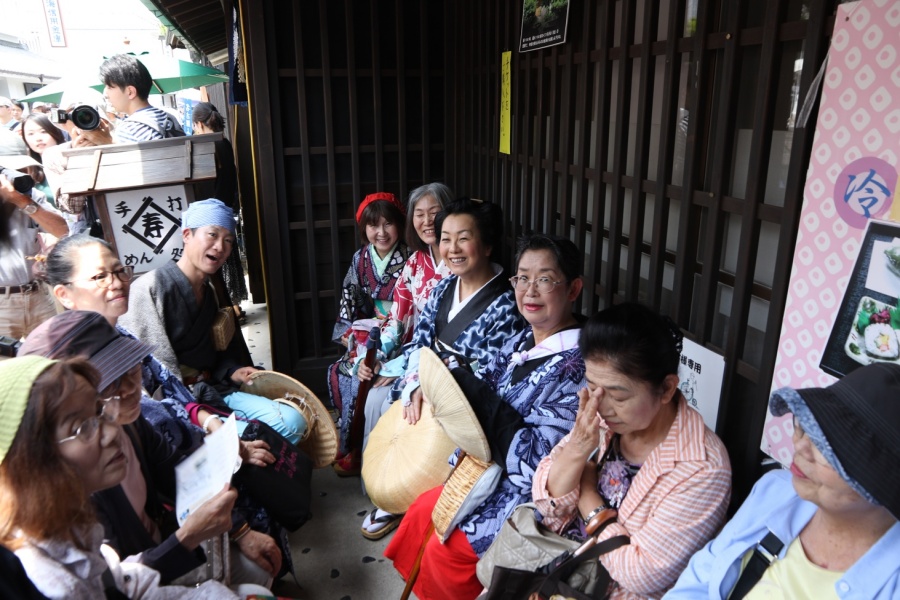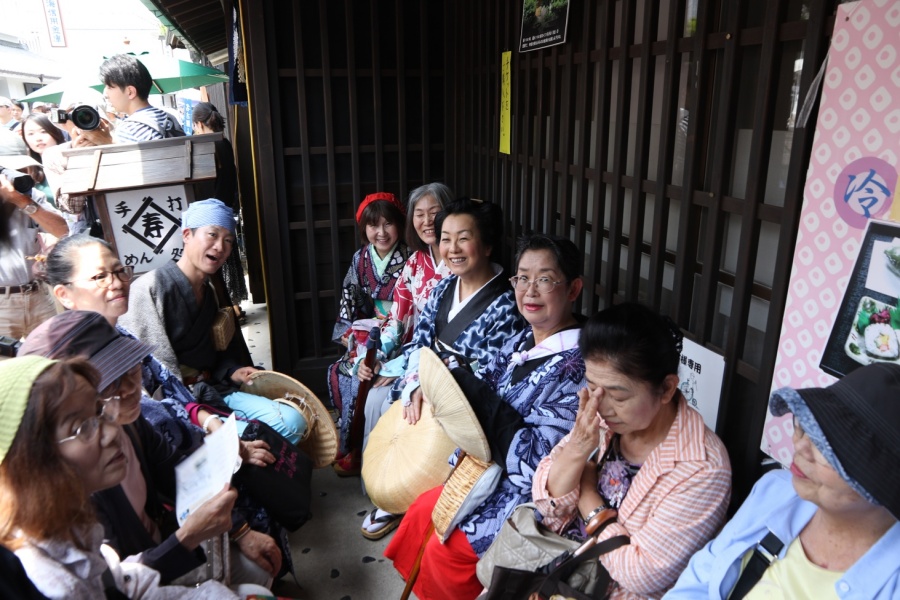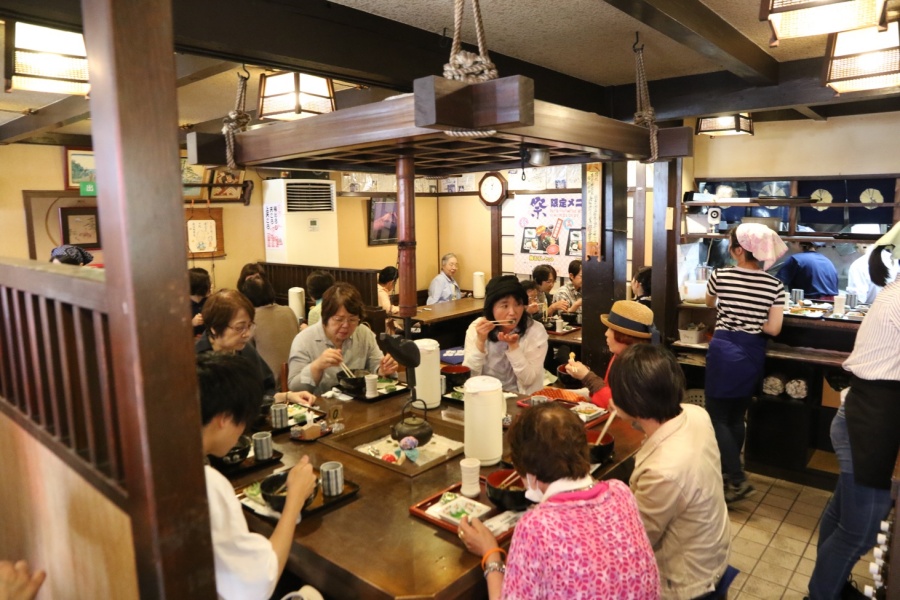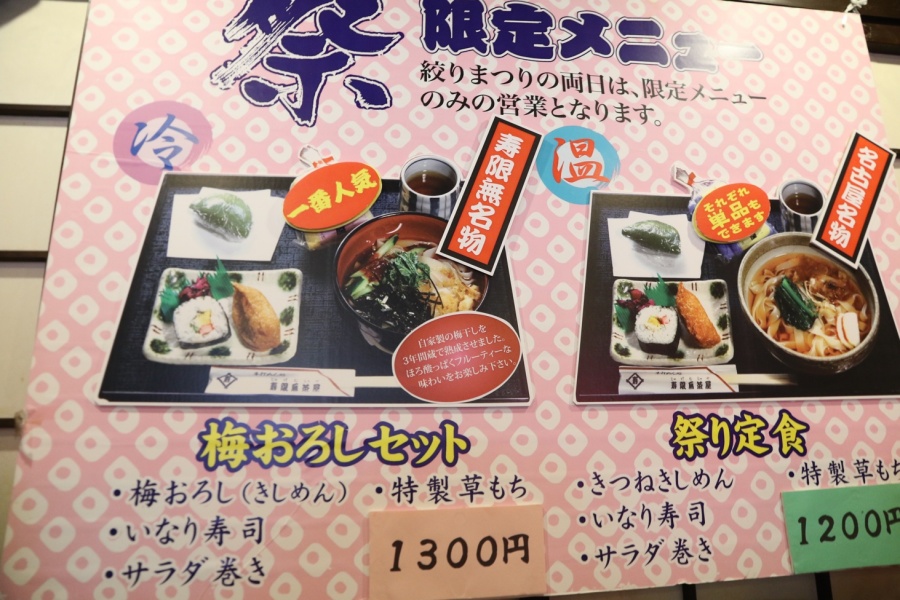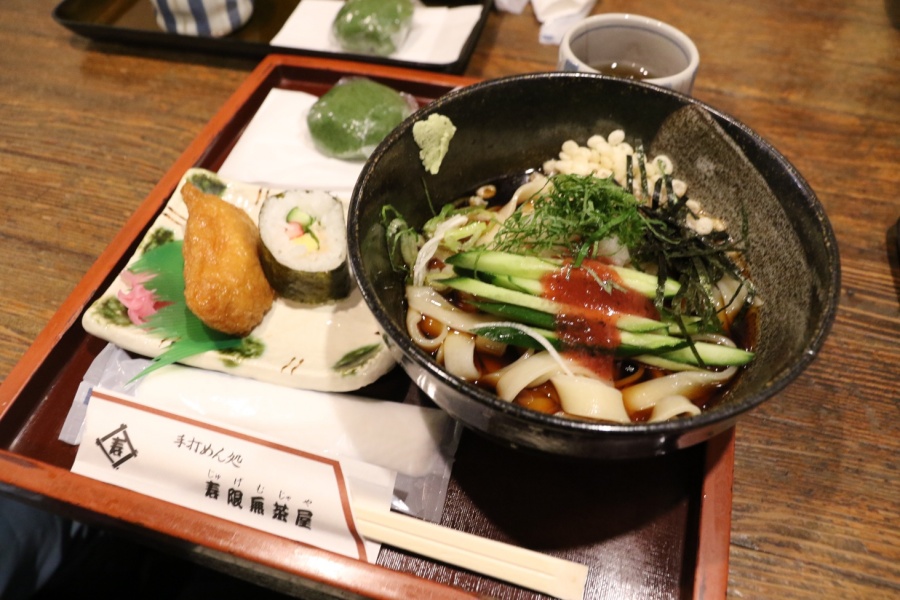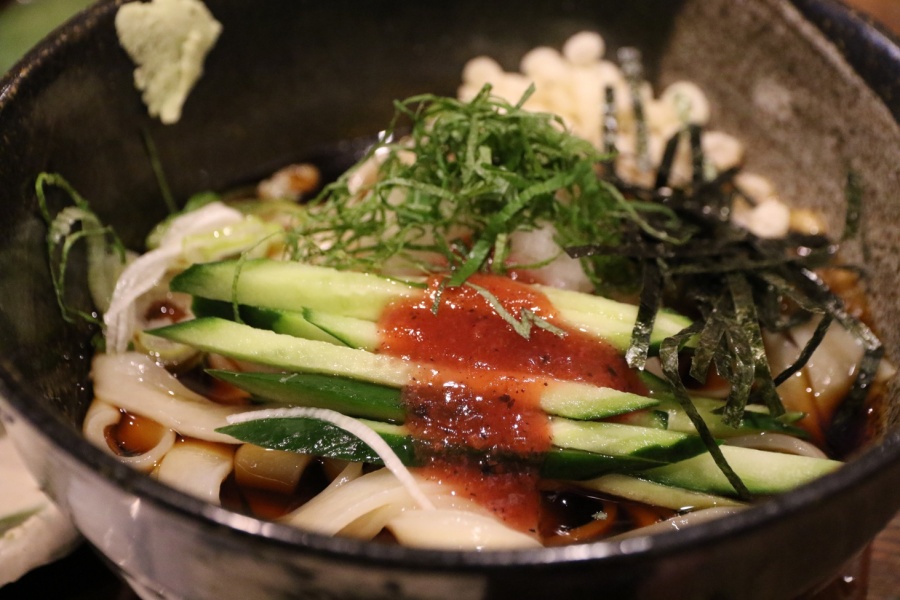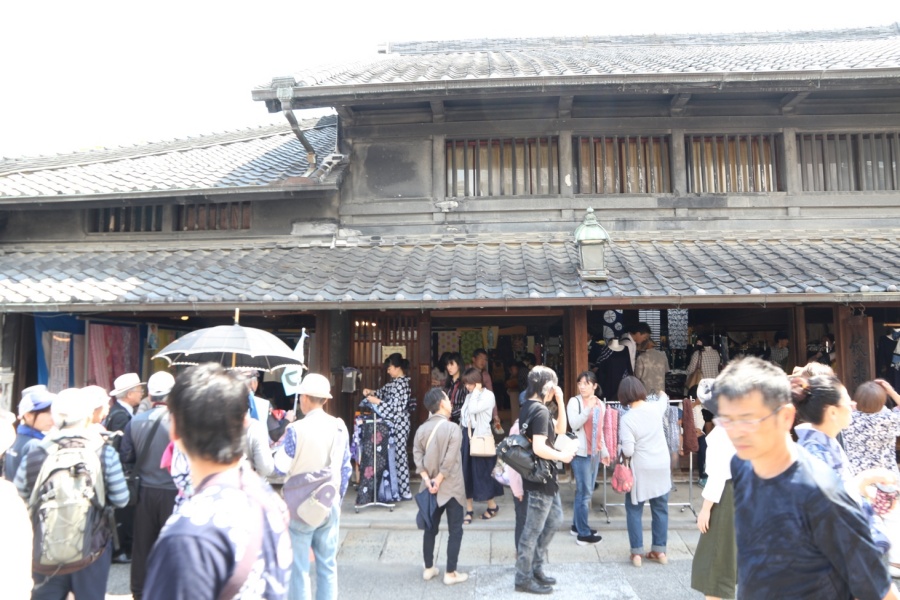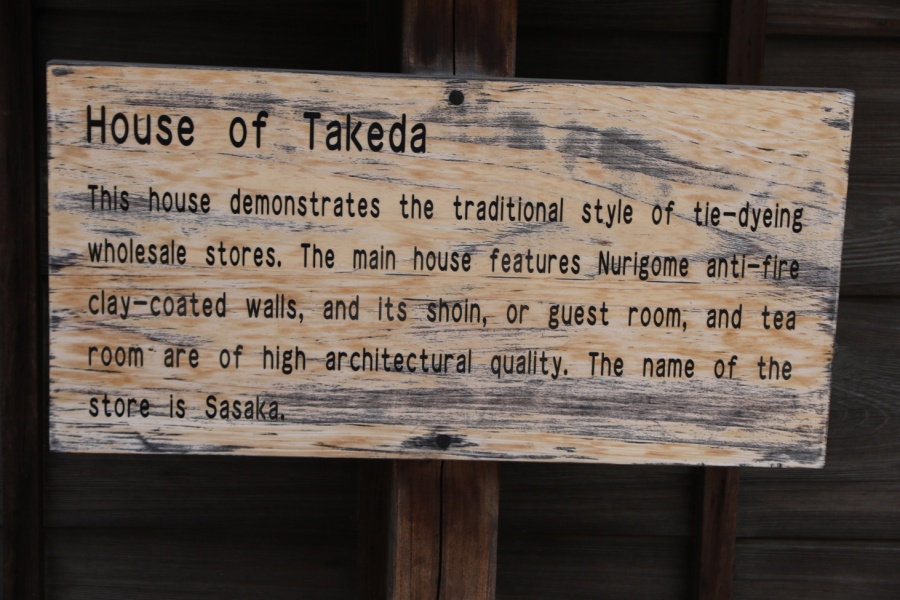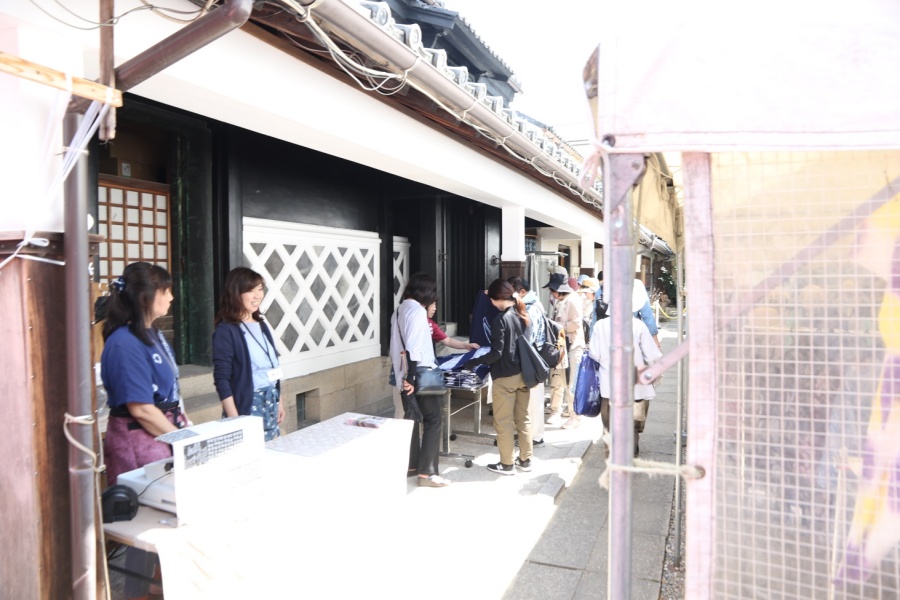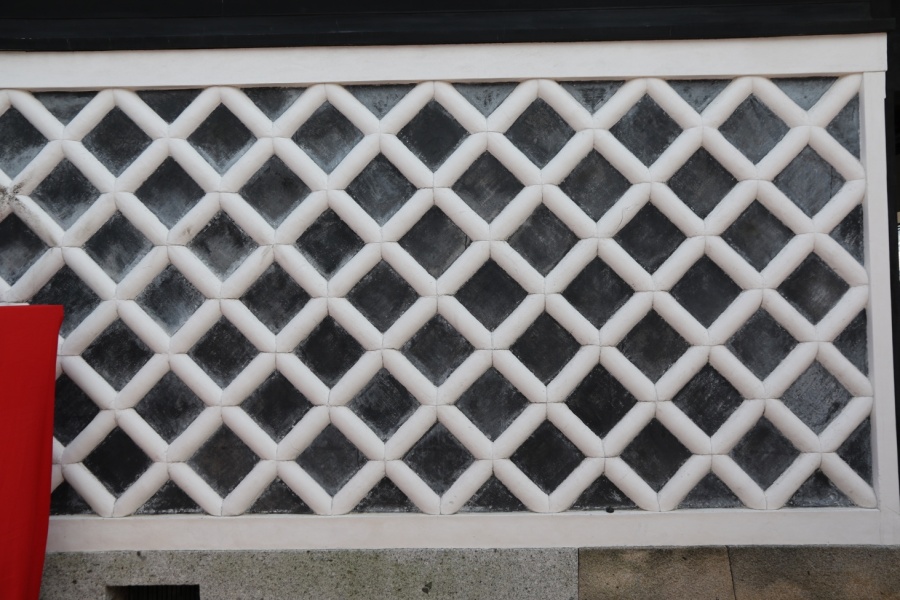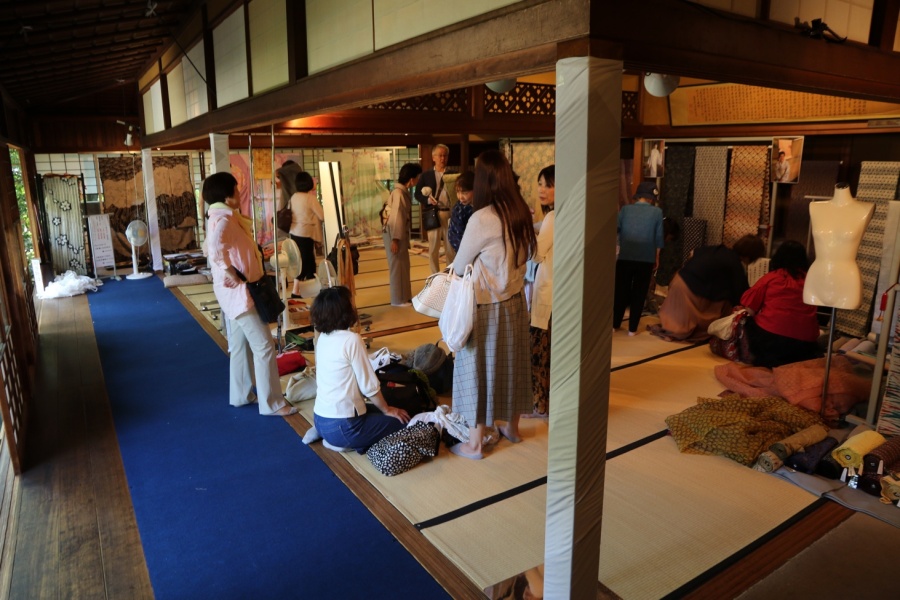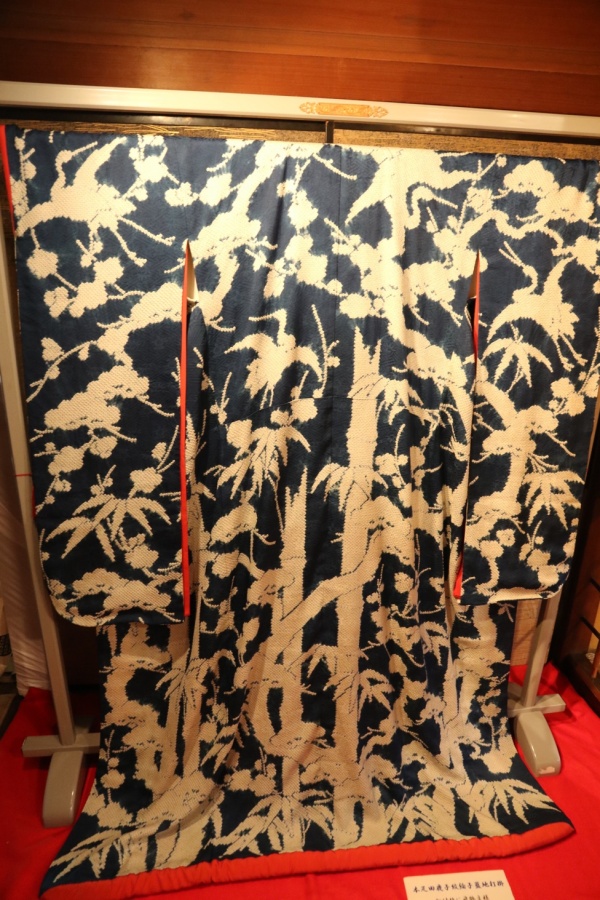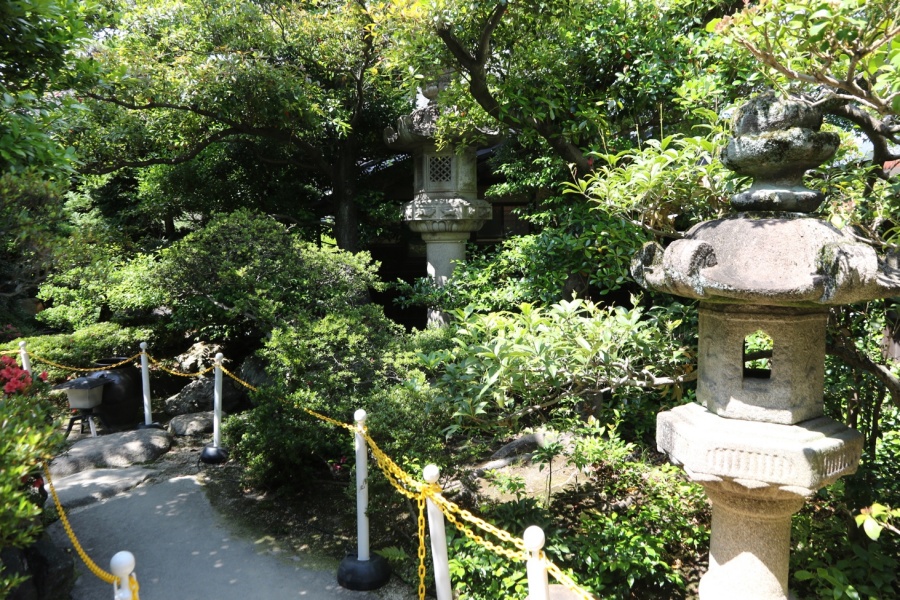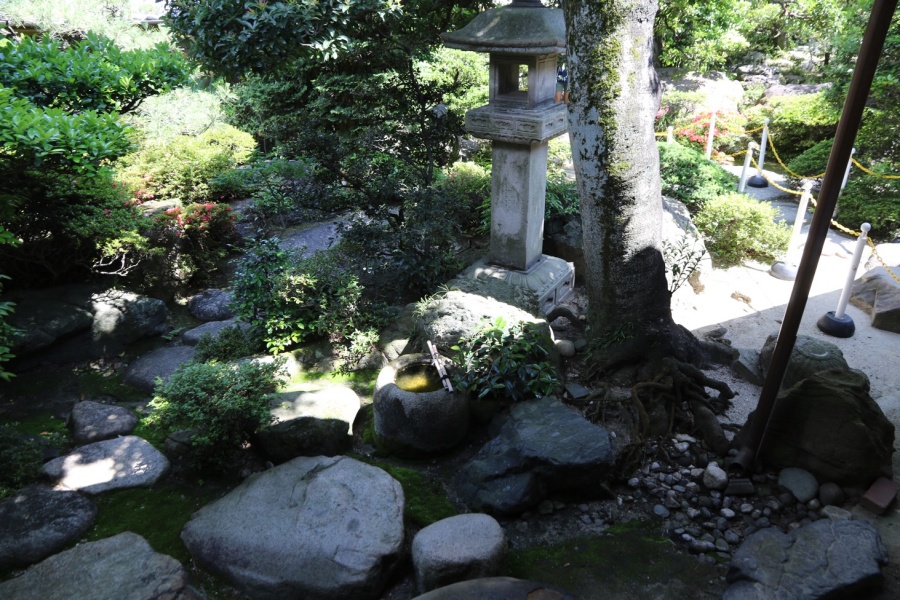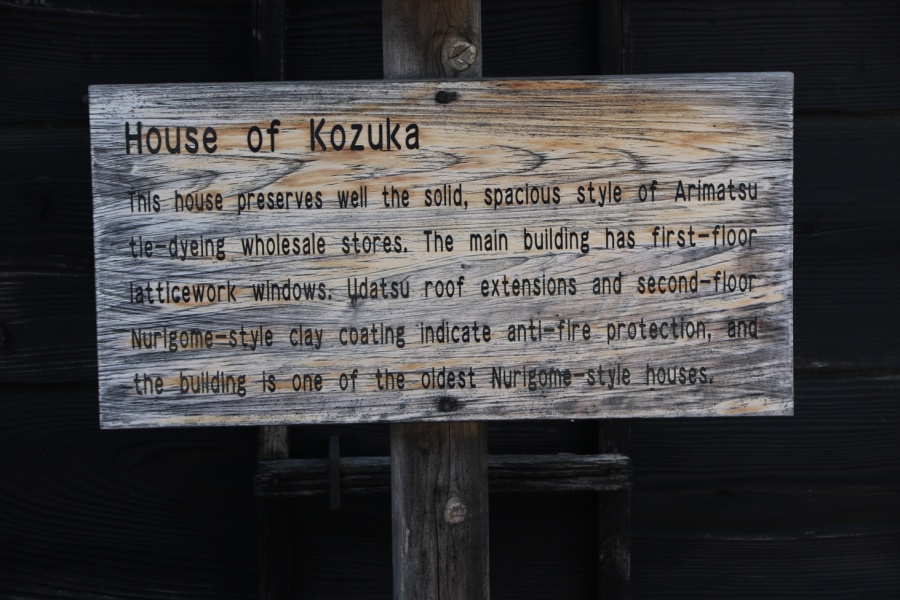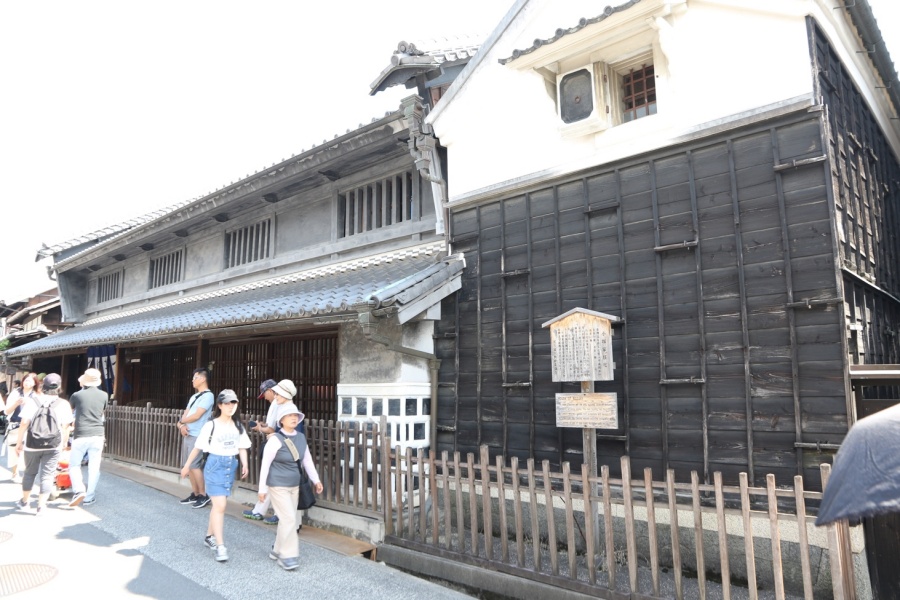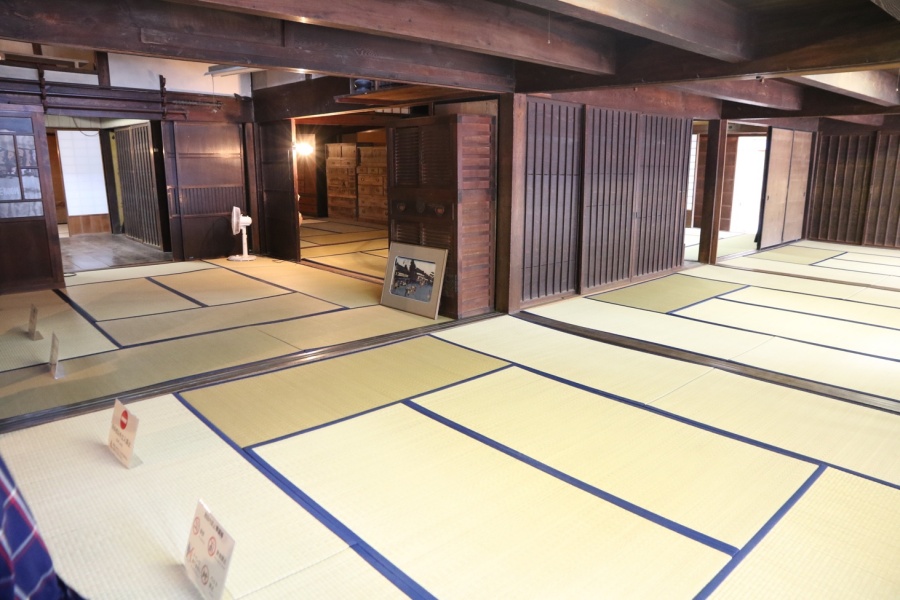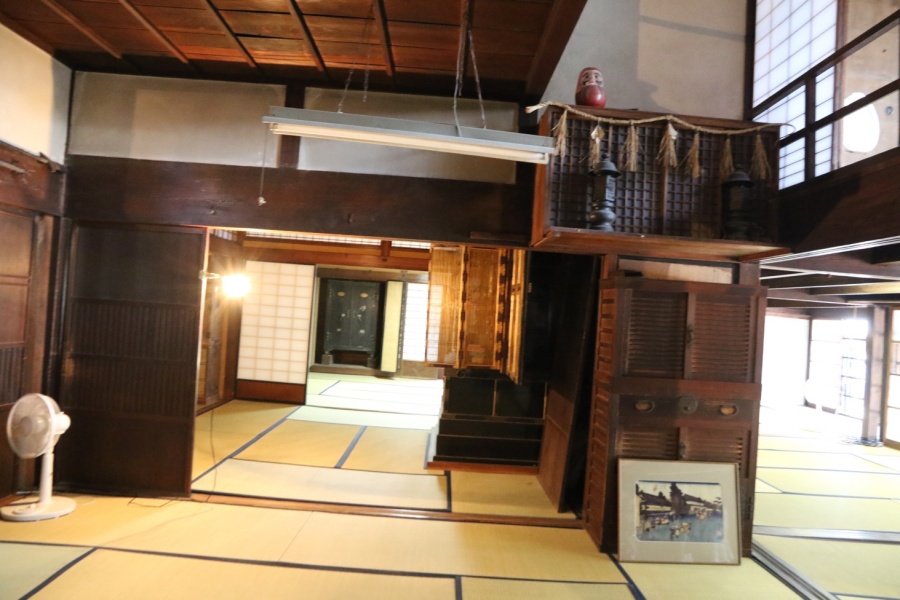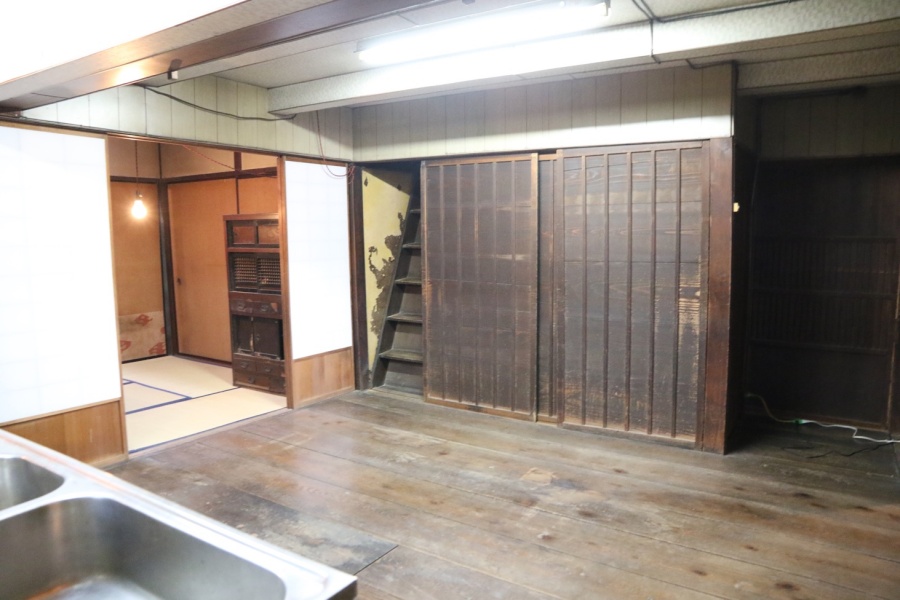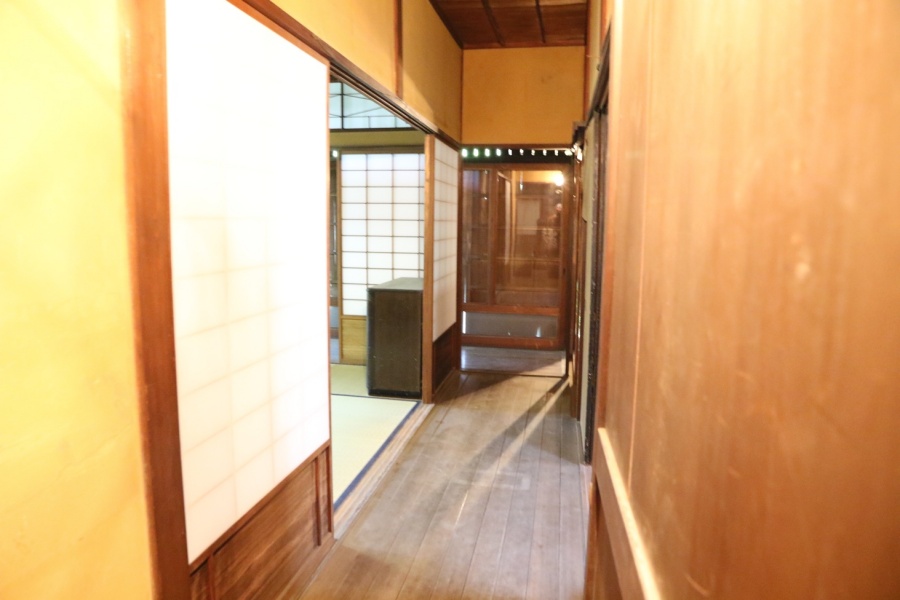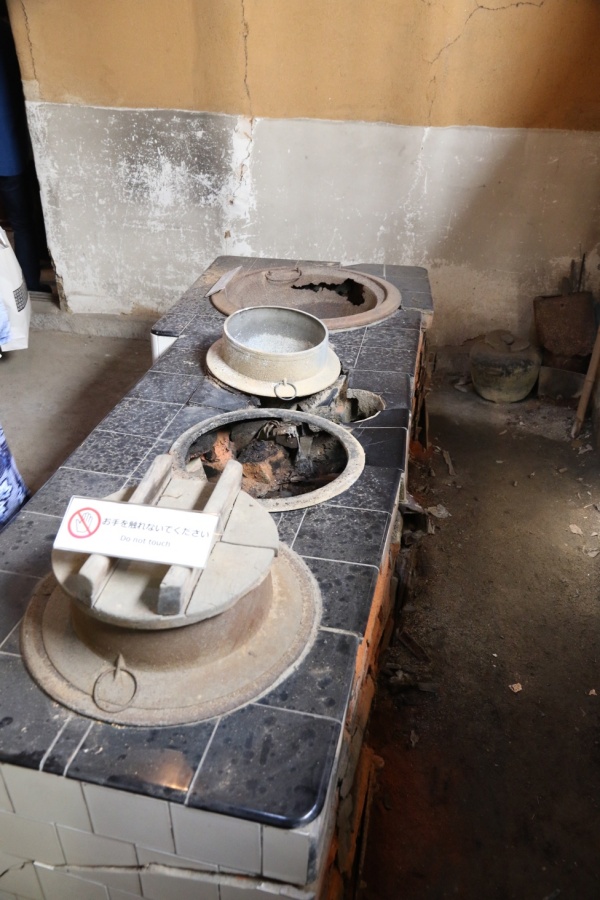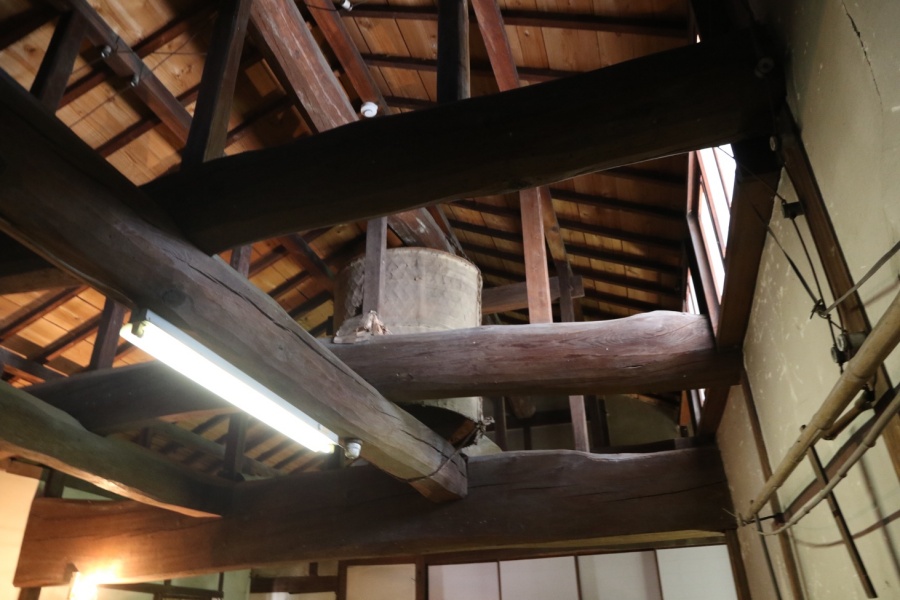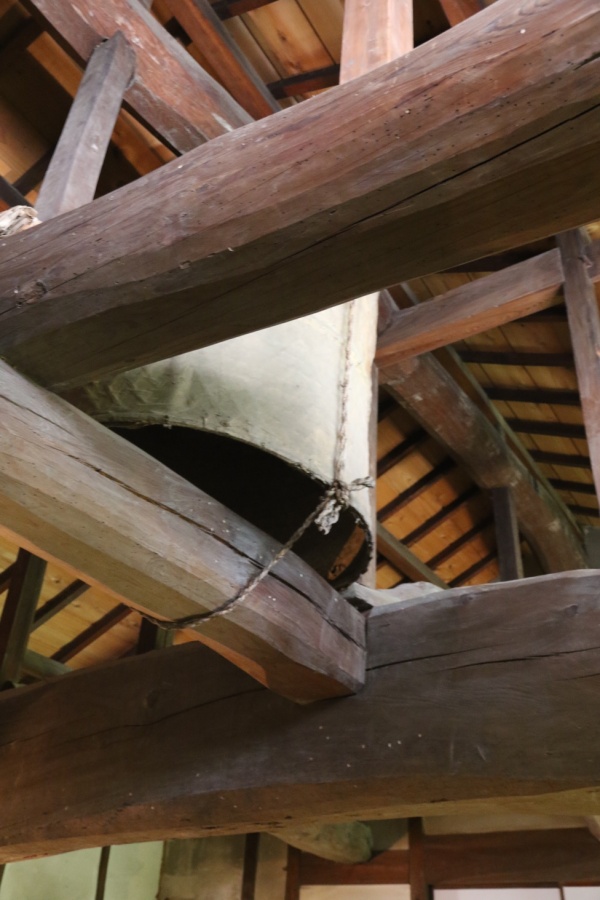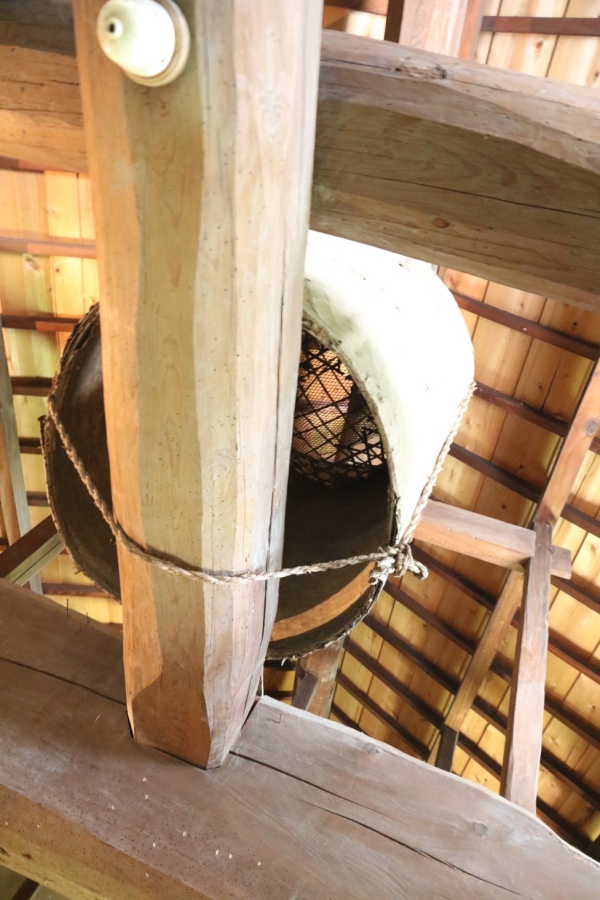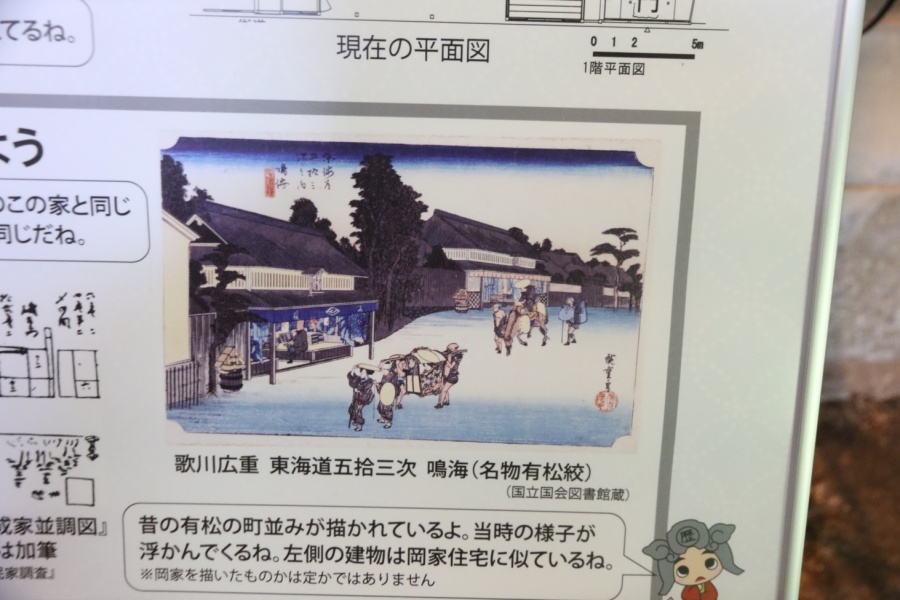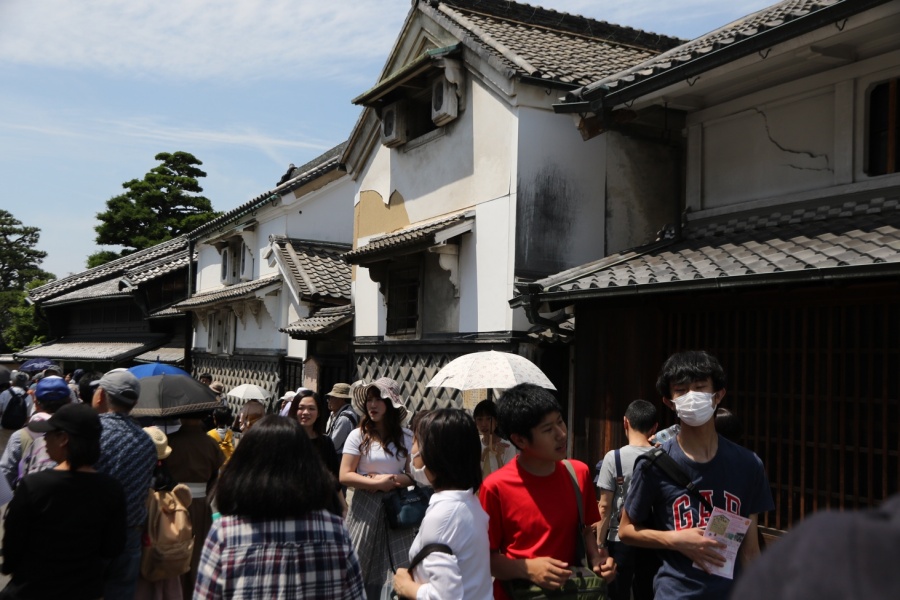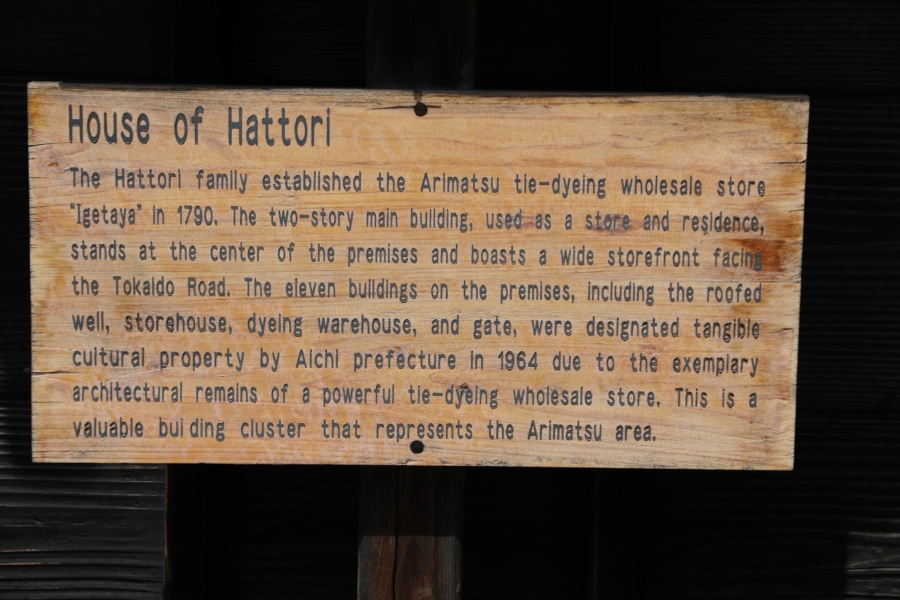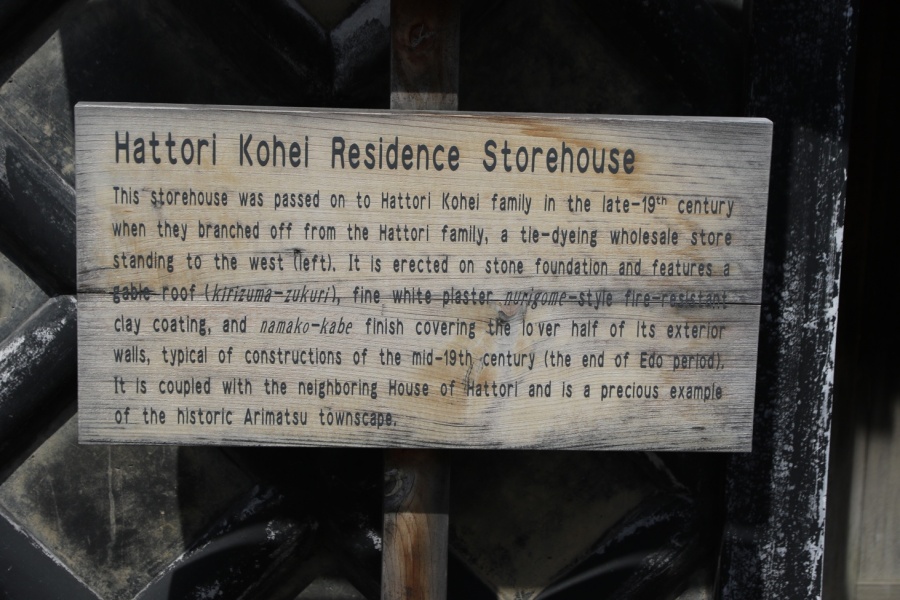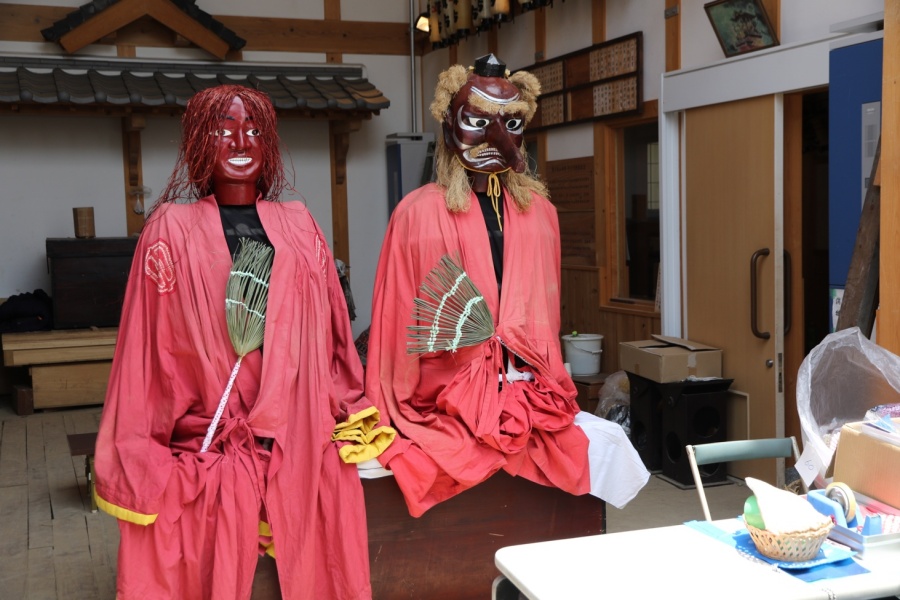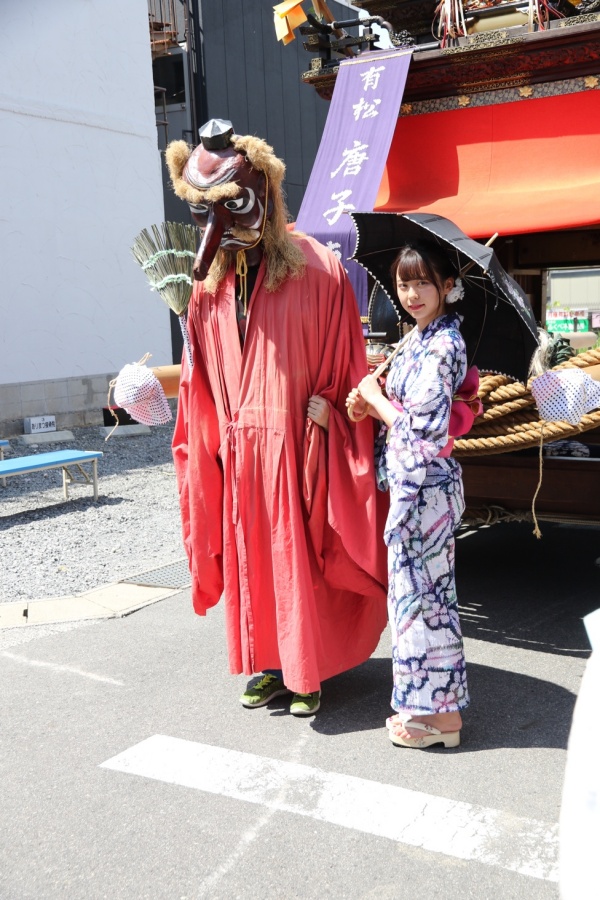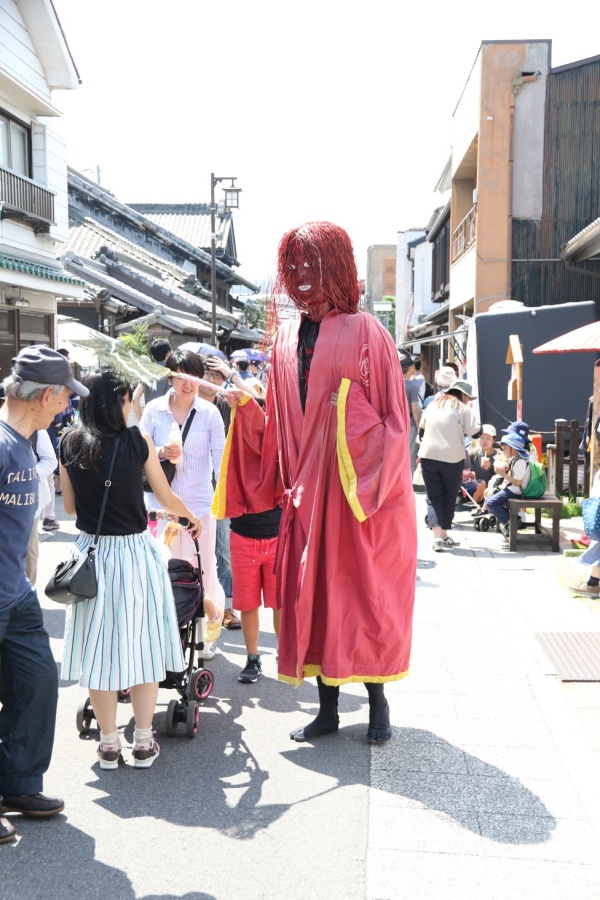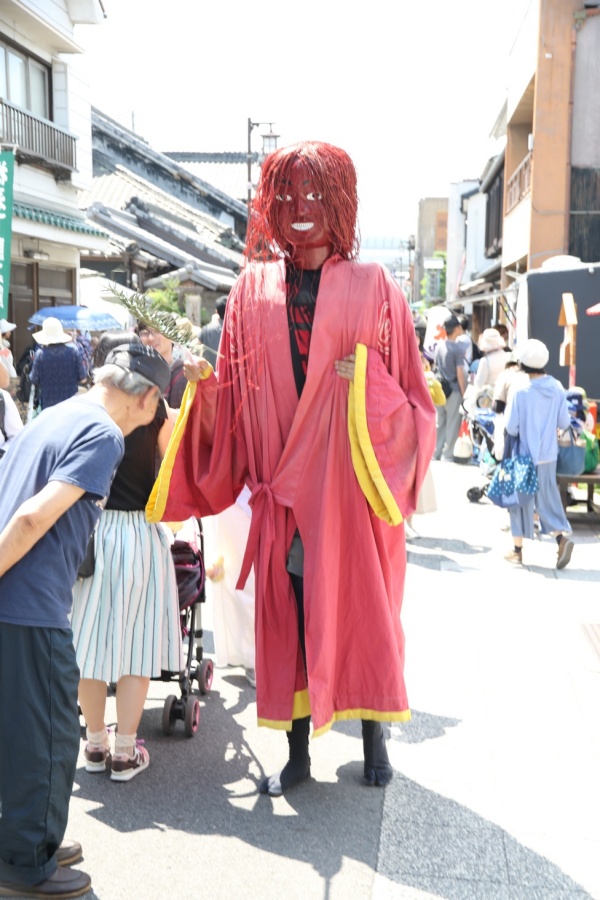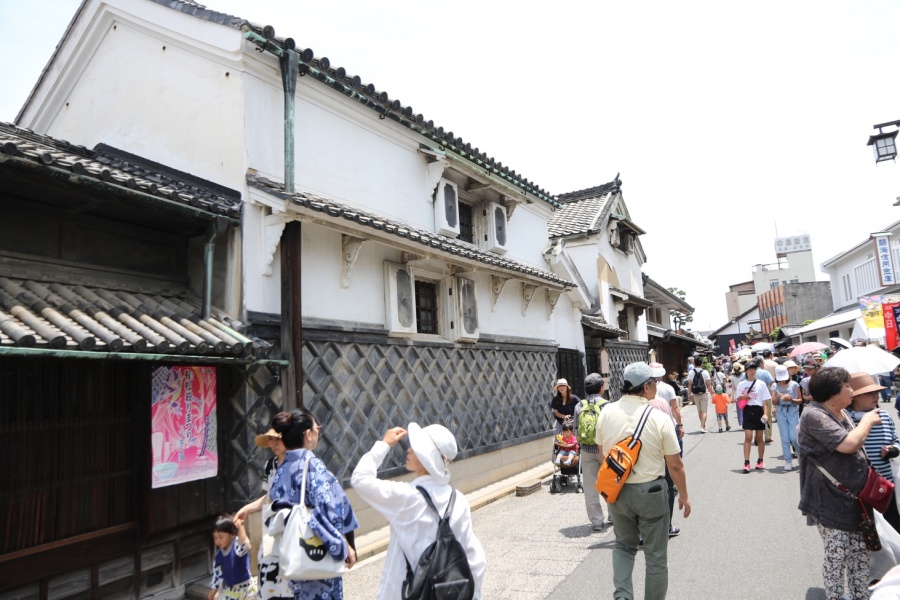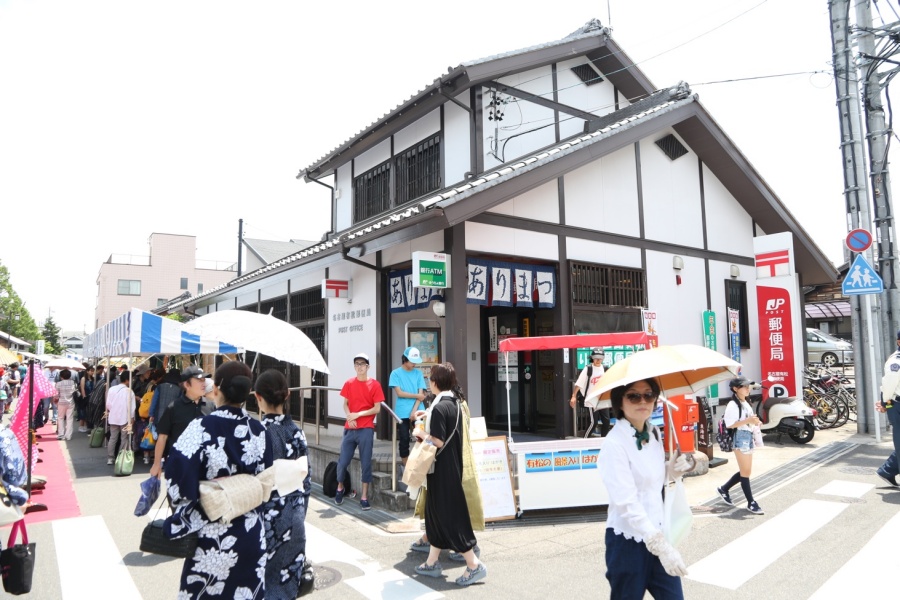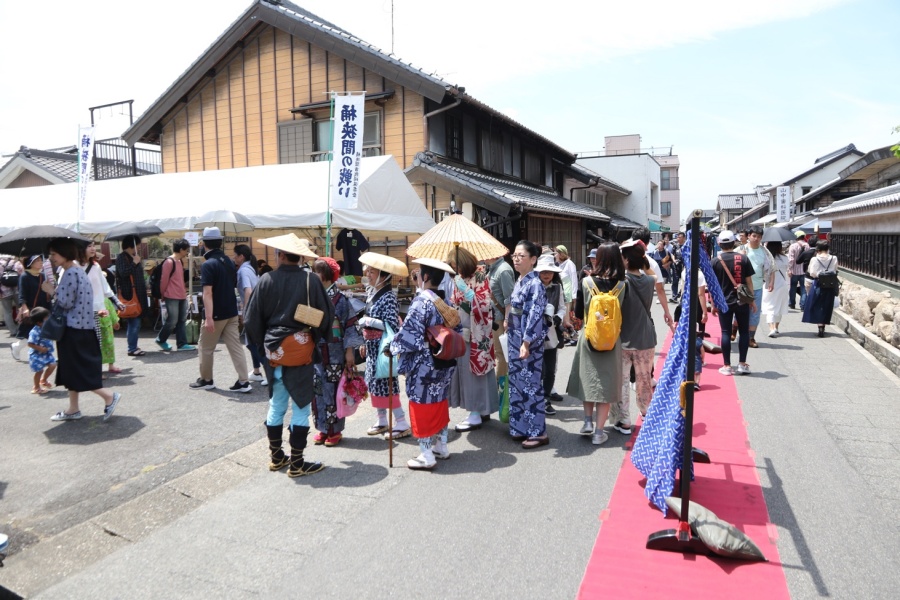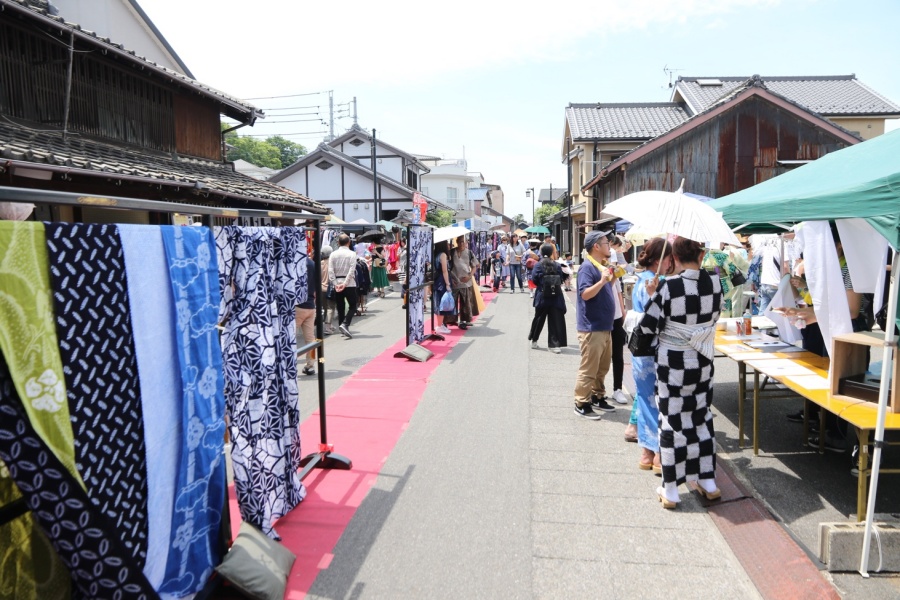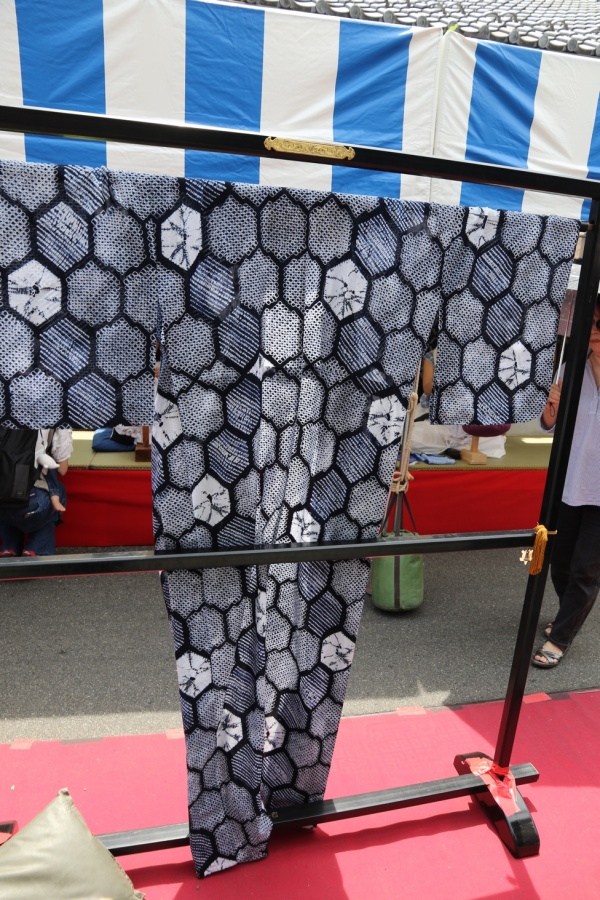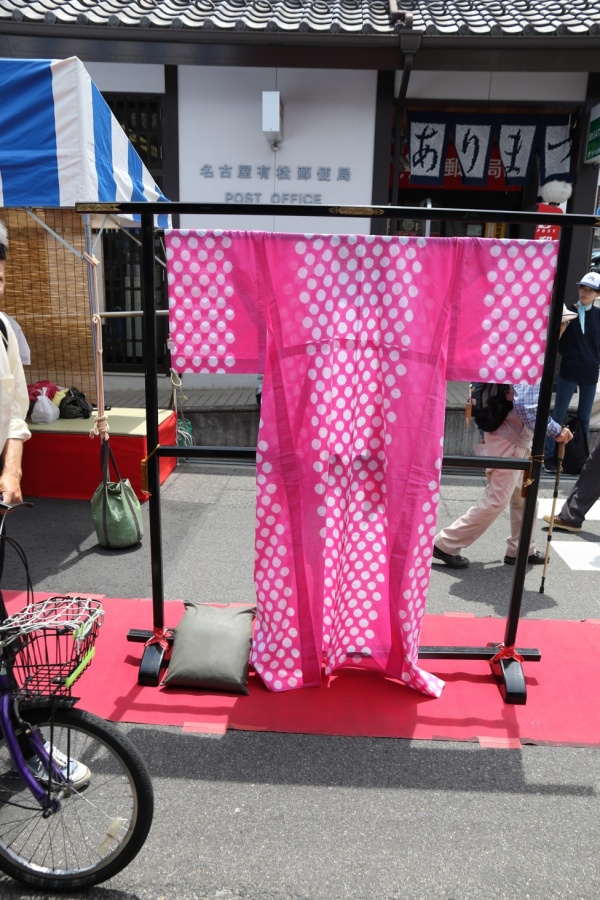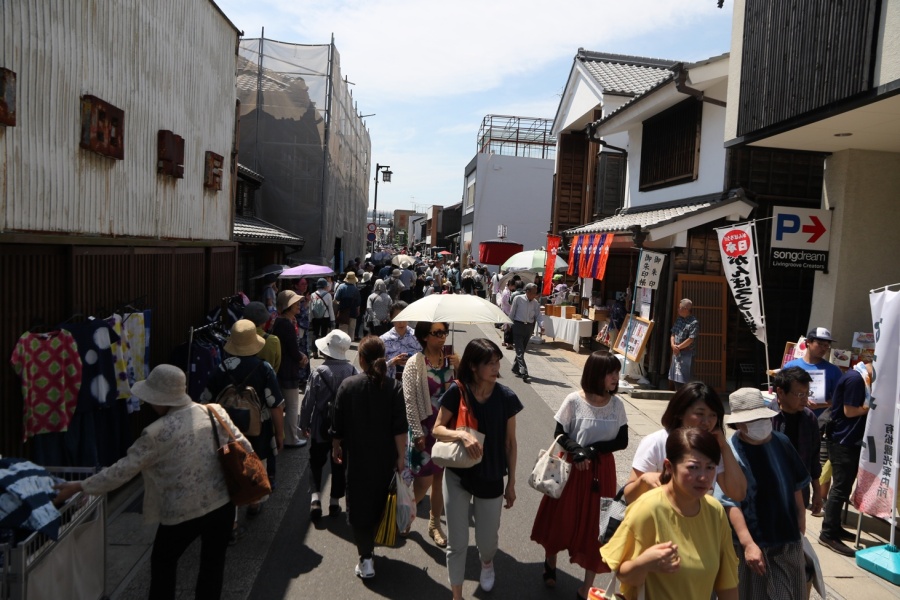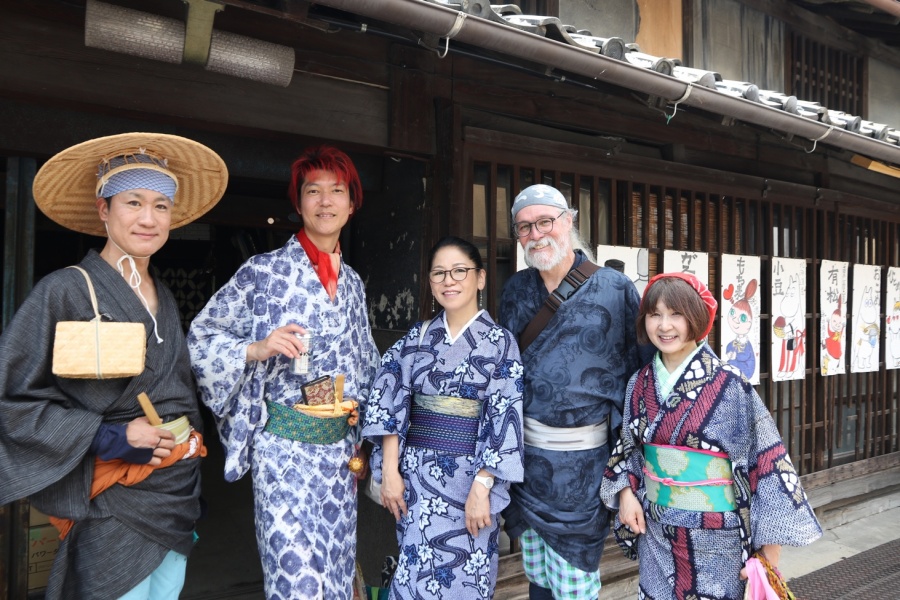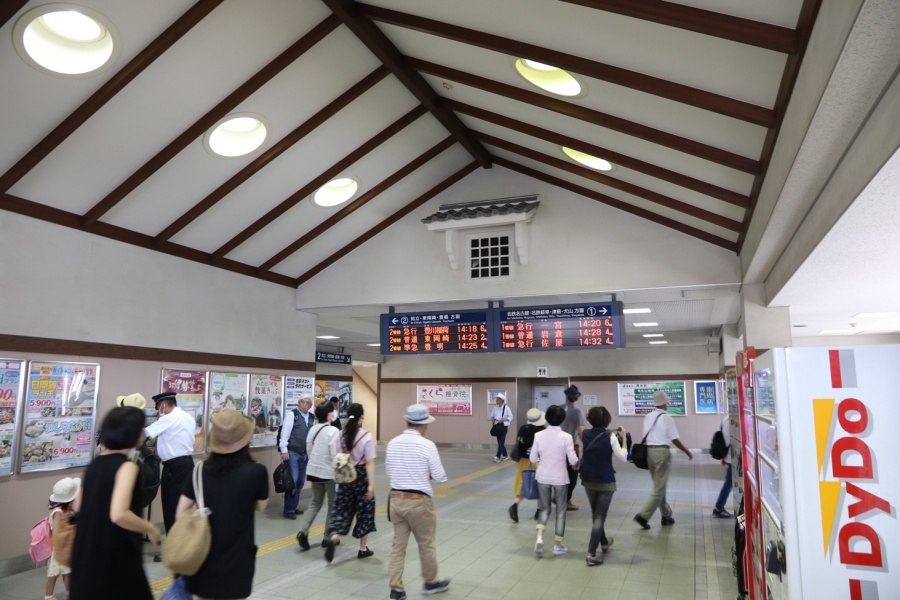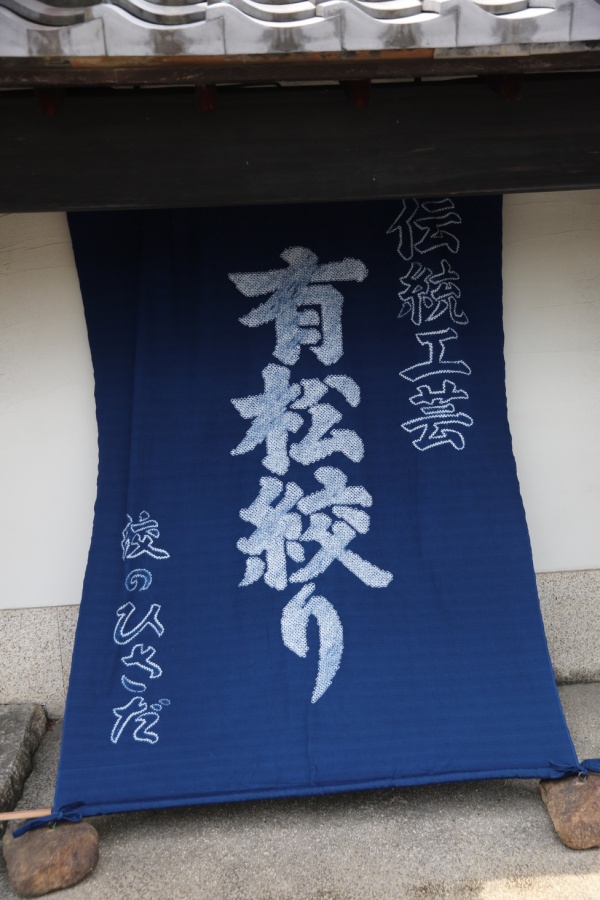Arimatsu Shibori Matsuri
|
|
The village of Arimatsu got its start in 1608, when it was founded by eight families. It lies along the Tokaido, one of the main feudal-era highways connecting Kyoto and Edo (today's Tokyo), and though it's now part of the city of Nagoya, in places it still retains the old-timey ambience of times past.
Arimatsu is also famed as center of production of a traditional type of labor-intensive tie-dyed fabric known as Arimatsu Shibori, which is prized for its complex patterns and intricate beauty.
|
|
The Arimatsu Shibori Matsuri is an annual festival that celebrates the town and its famous textiles. This year's, the 35th, took place the weekend of June 1 and 2.
|
|
That Saturday morning, I met with a group of people who planned to retrace the route of Edo-period travelers along the Tokaido highway. We were to meet up at Narumi, the nearest post town, and walk along the Tokaido from there to Arimatsu -- a stretch of about two kilometers.
|
|
Many of the group's members were dressed in the traditional manner of travelers of the era...
|
|
|
|
|
|
|
|
|
|
...myself included.
|
|
This section of the Tokaido is now a modern suburban roadway, but here and there we spotted structures and markers that hearkened back to an earlier age, and other reminders of historical importance of the route.
|
|
|
|
|
|
|
|
|
|
|
|
|
|
|
|
|
|
|
|
|
|
Along the way, one of our members had a footwear crisis that required emergency repairs, but he was soon back en route.
|
|
|
|
|
|
|
|
|
|
On reaching Arimatsu, our destination, the first thing we spied was a festival dashi -- a traditional wheeled float. Both this dashi and the others we saw date from the nineteenth century.
|
|
|
|
|
|
Inside the dashi there's space for musicians.
|
|
We continued on, and before long we arrived at a bustling festival street.
|
|
|
|
|
|
Many posted signboards give helpful info about the festival in English and Japanese.
|
|
|
|
|
|
|
|
|
|
There were even free guided tours of the area on offer.
|
|
A centrally located information booth offered guide maps in English.
|
|
|
|
Ubiquitous markers described points of historical or cultural interest.
|
|
We also saw artisans demonstrating their skills.
|
|
|
|
|
|
|
|
Down one side street was another dashi float featuring karakuri mechanical puppets. During processions, these are controlled by operators inside the dashi.
|
|
|
|
|
|
|
|
Vendor stalls sold tasty-looking treats of many kinds.
|
|
|
|
|
|
|
|
|
|
|
|
And then we found Arimatsu's third dashi float.
|
|
For lunch, we decided to try a shop that serves flat, broad noodles called kishimen -- a specialty of Japan's Nagoya area. Most of the restaurants in the area had long lines, but the place we chose seemed to be getting diners in and out rapidly and efficiently. Our wait to get in was short.
|
|
|
|
|
|
The restaurant was offering a special two-choice-only festival menu: chilled or warm noodles. I opted for the chilled kishimen with tangy ume plum sauce and grated daikon. It came quickly.
|
|
|
|
|
|
Several old merchant houses were open to the public, and we didn't miss the chance to check a few of them out. One was the Takeda house.
|
|
|
|
|
|
|
|
|
|
|
|
The Takeda house also had a lovely courtyard garden -- a serene retreat from the clamor and bustle of the streets outside.
|
|
|
|
Another was the Kozuka residence.
|
|
|
|
|
|
|
|
|
|
|
|
|
|
Up in the roofbeams of this house was a giant sieve, which was used to wash the fabric made here.
|
|
|
|
|
|
These residences were essentially unchanged from when artist Hiroshige depicted them in his famed "Fifty-Three Stations of the Tokaido" series of woodblock prints.
|
|
Another was the Hattori complex of residences, shops, and storehouses.
|
|
|
|
|
|
These are two mythical characters: the one on the left is called a shojo, and the other one, with the long nose, is a tengu. They amble about patting people on the head with a rake, which is held to bring good fortune. We made sure to get tapped, too!
|
|
|
|
|
|
|
|
After a full day enjoying the festival, we made our way to Arimatsu Station, whose interior maintains the same architectural style of the old town, for the 30-minute ride to central Nagoya. I'm looking forward to visiting Arimatsu again!
|
|
|
|
|
|
|
|
|
|
|
|
|
|
|
|
|
|
|
|
- 1811 Arimatsu, Midori-ku, Nagoya City, Aichi
- 10:00 a.m. - 4:00 p.m. (Only available on Friday, Saturday, Sunday and holidays)
- 052-626-6030
- https://arimatsu-tabi.nagoya/




